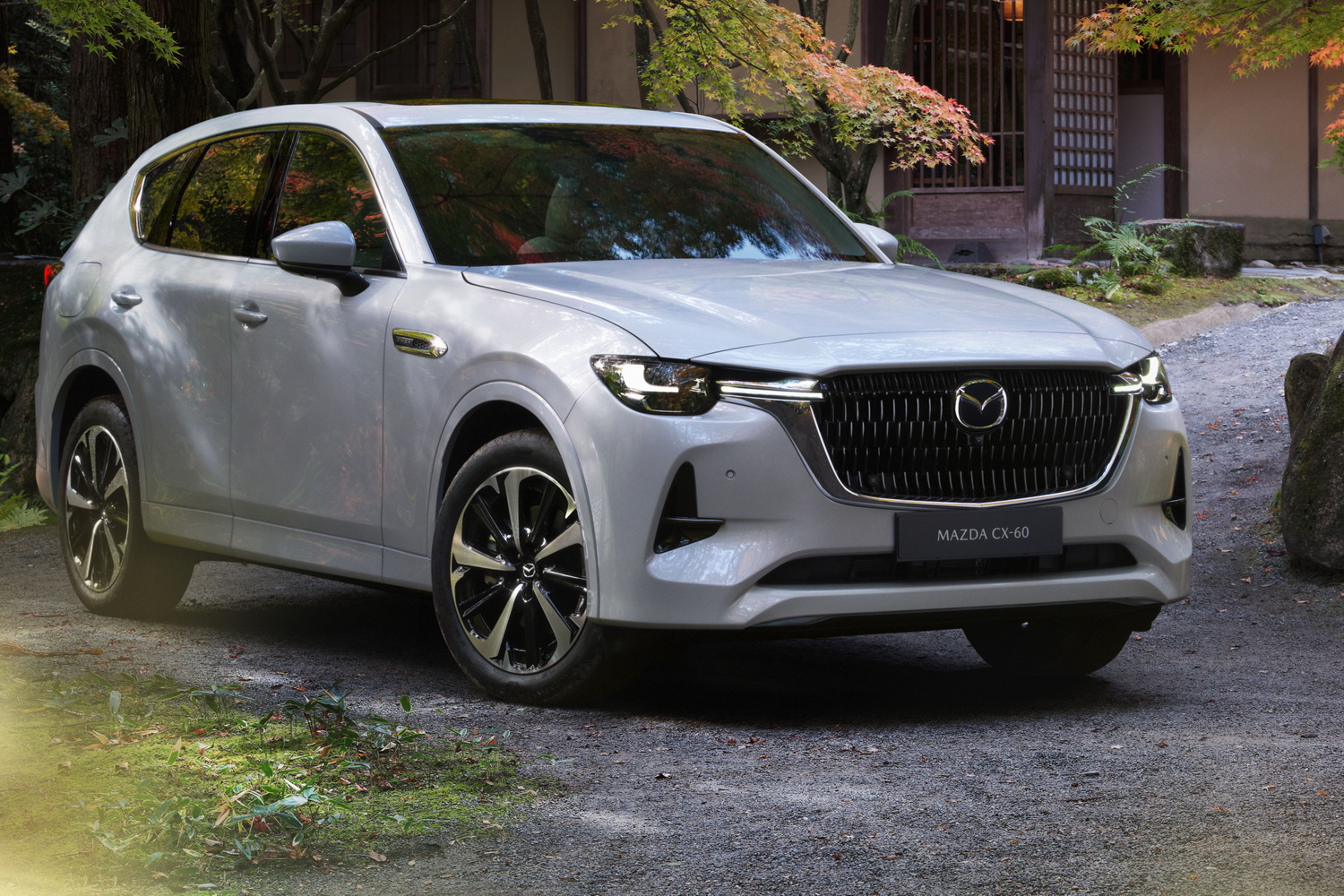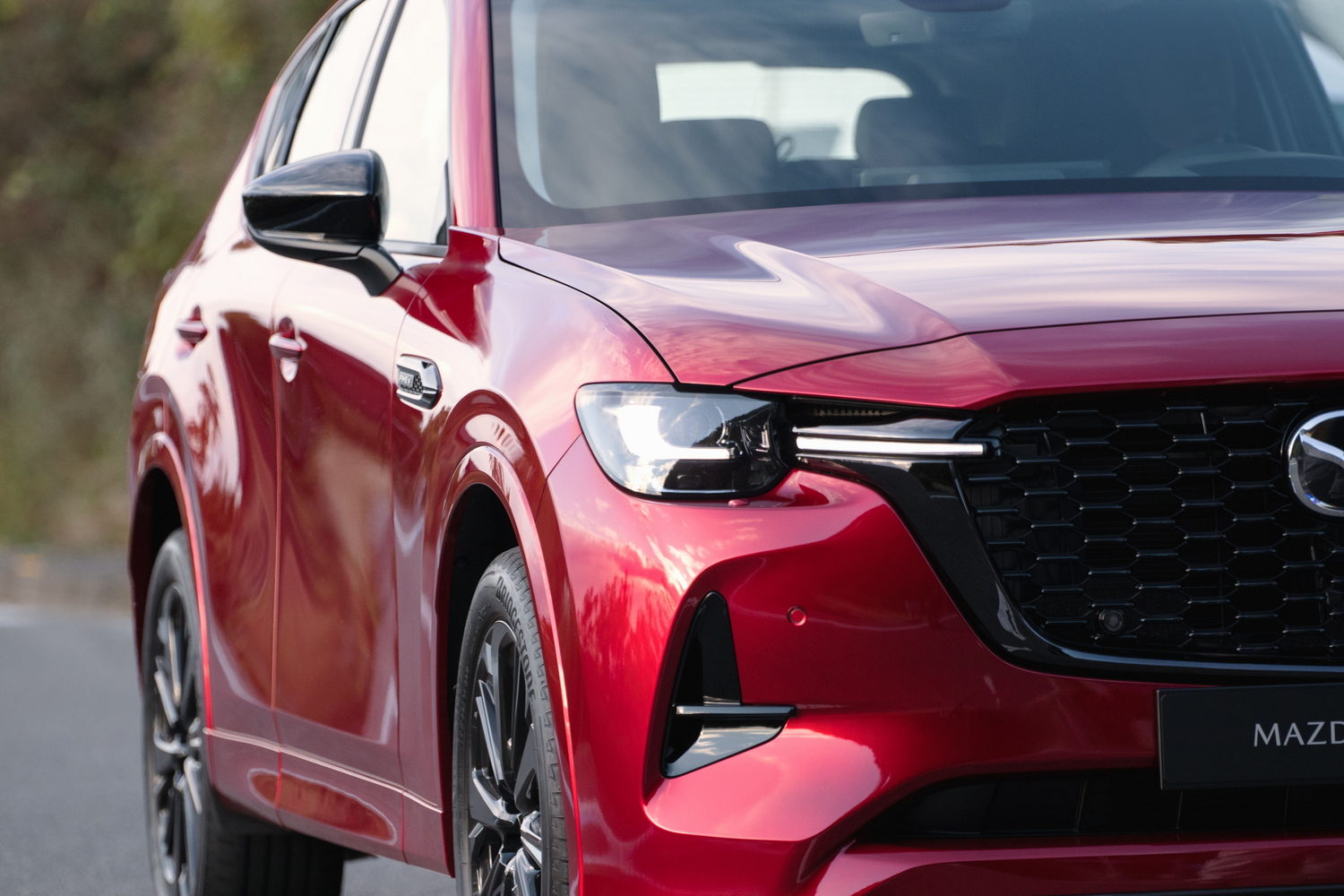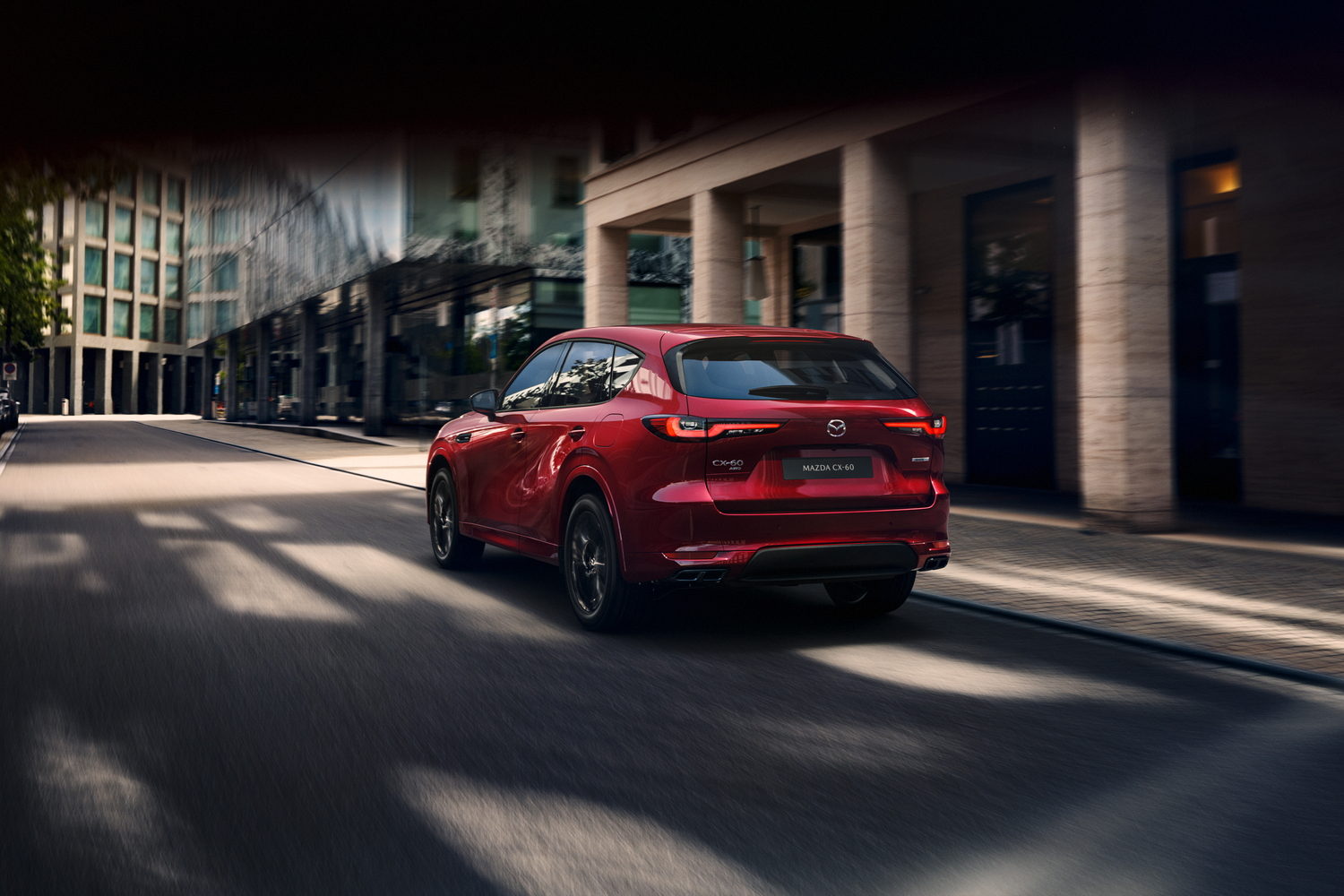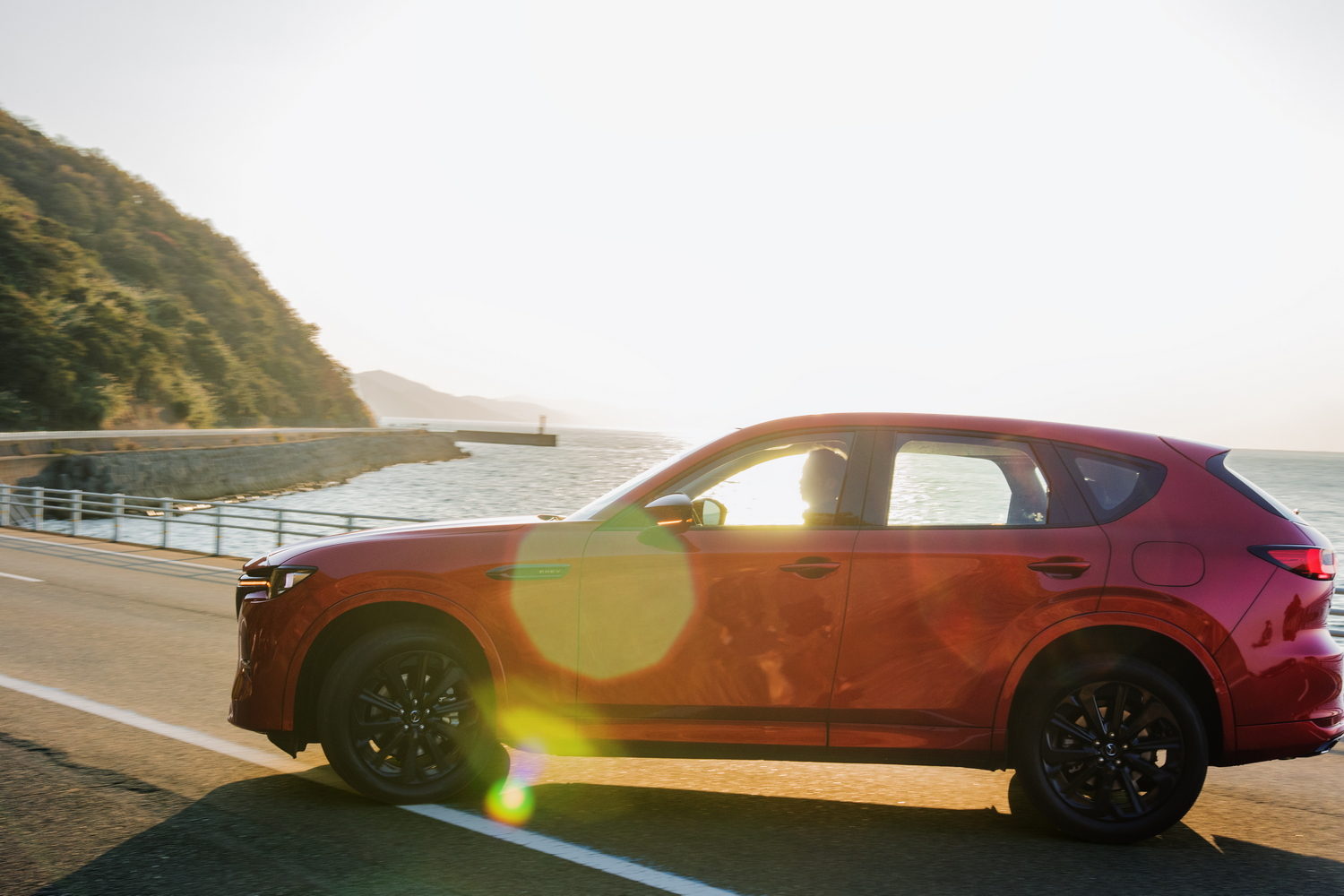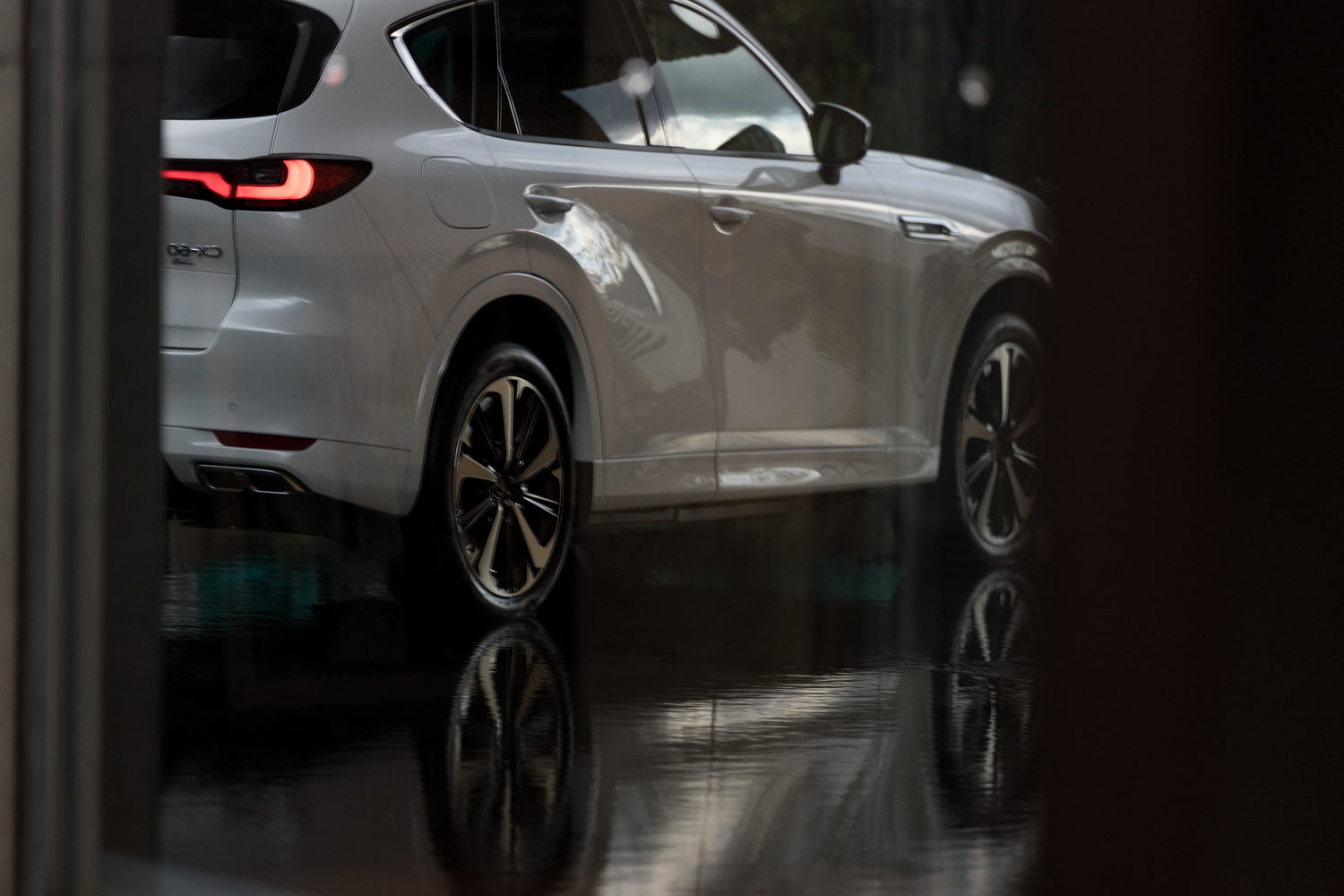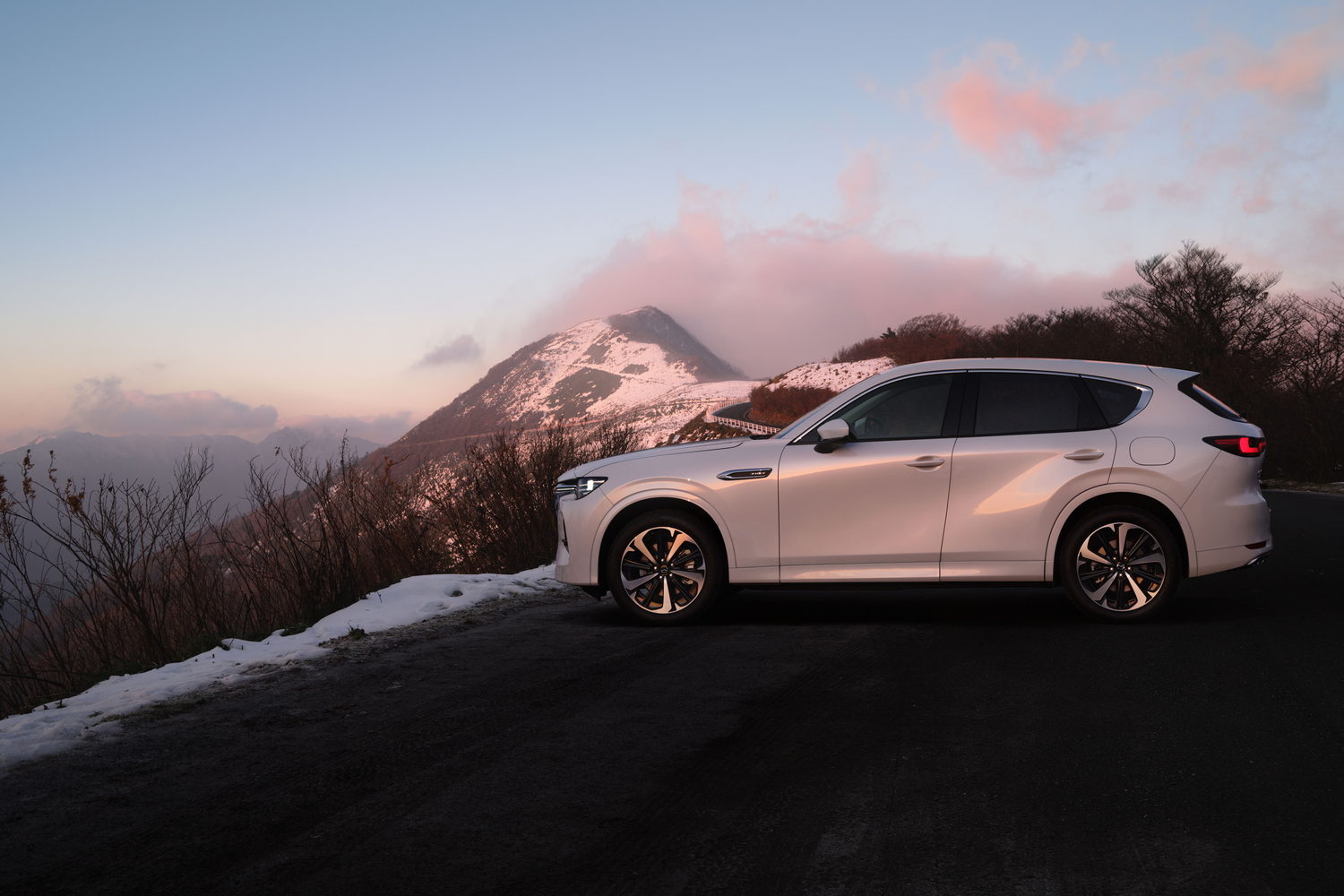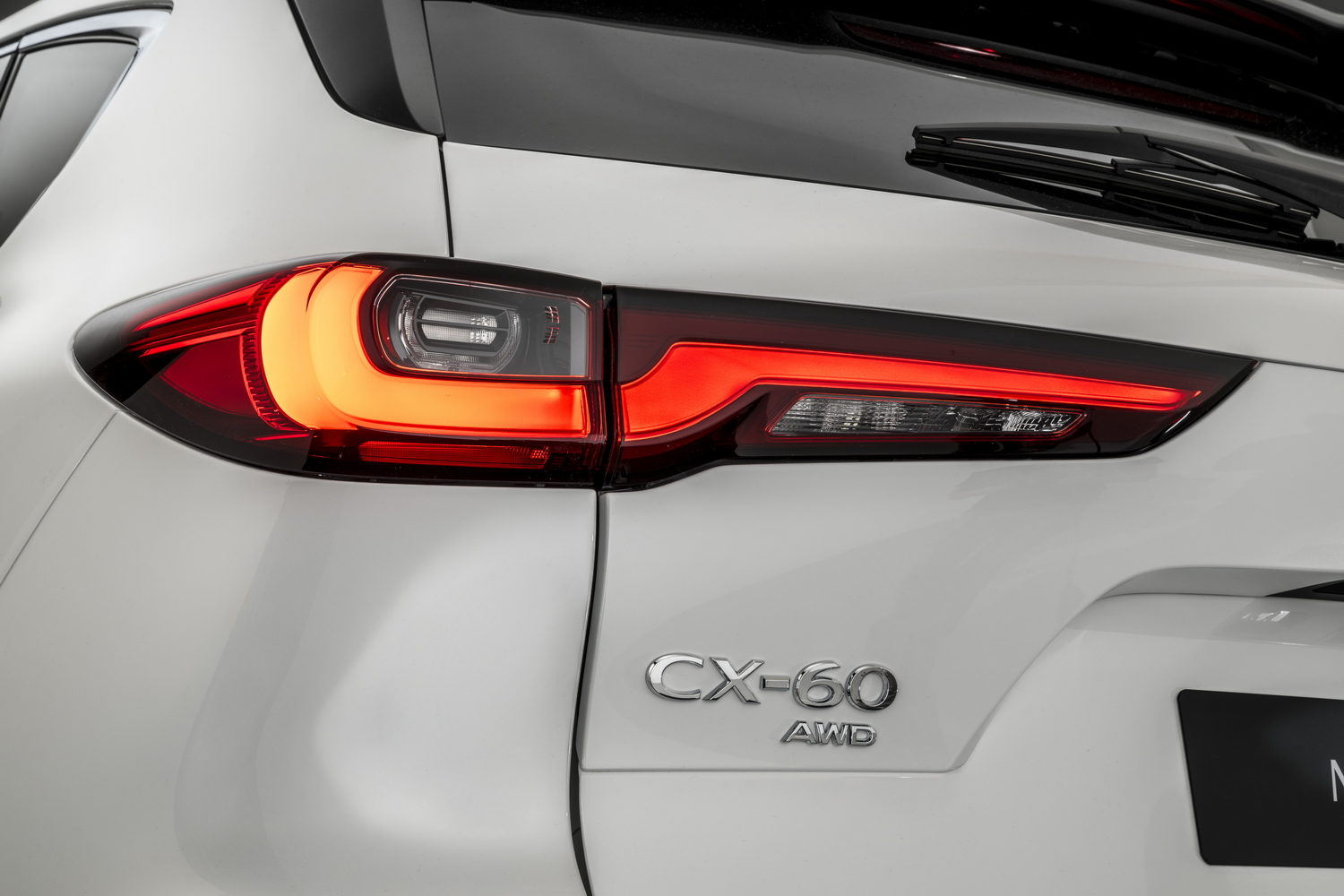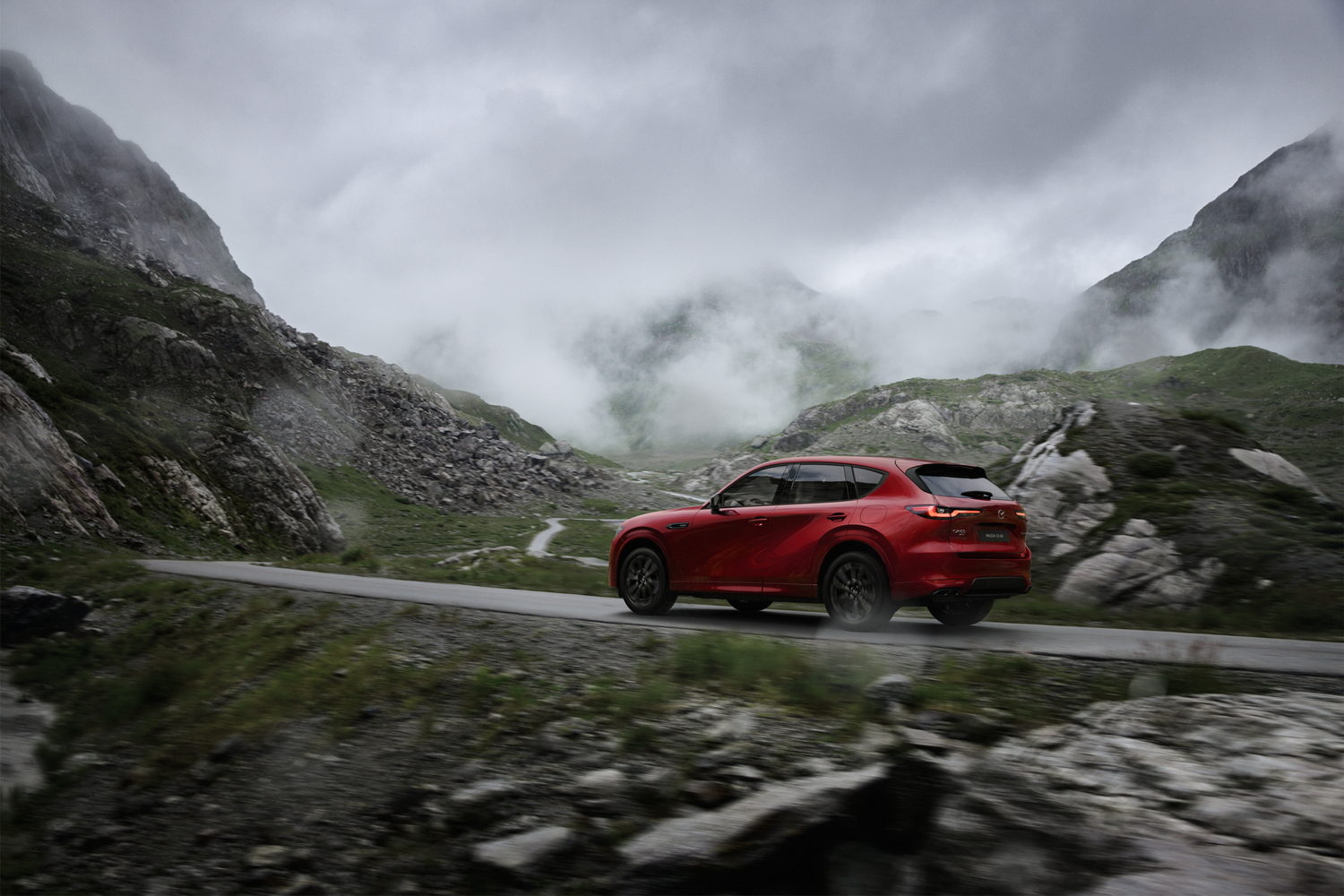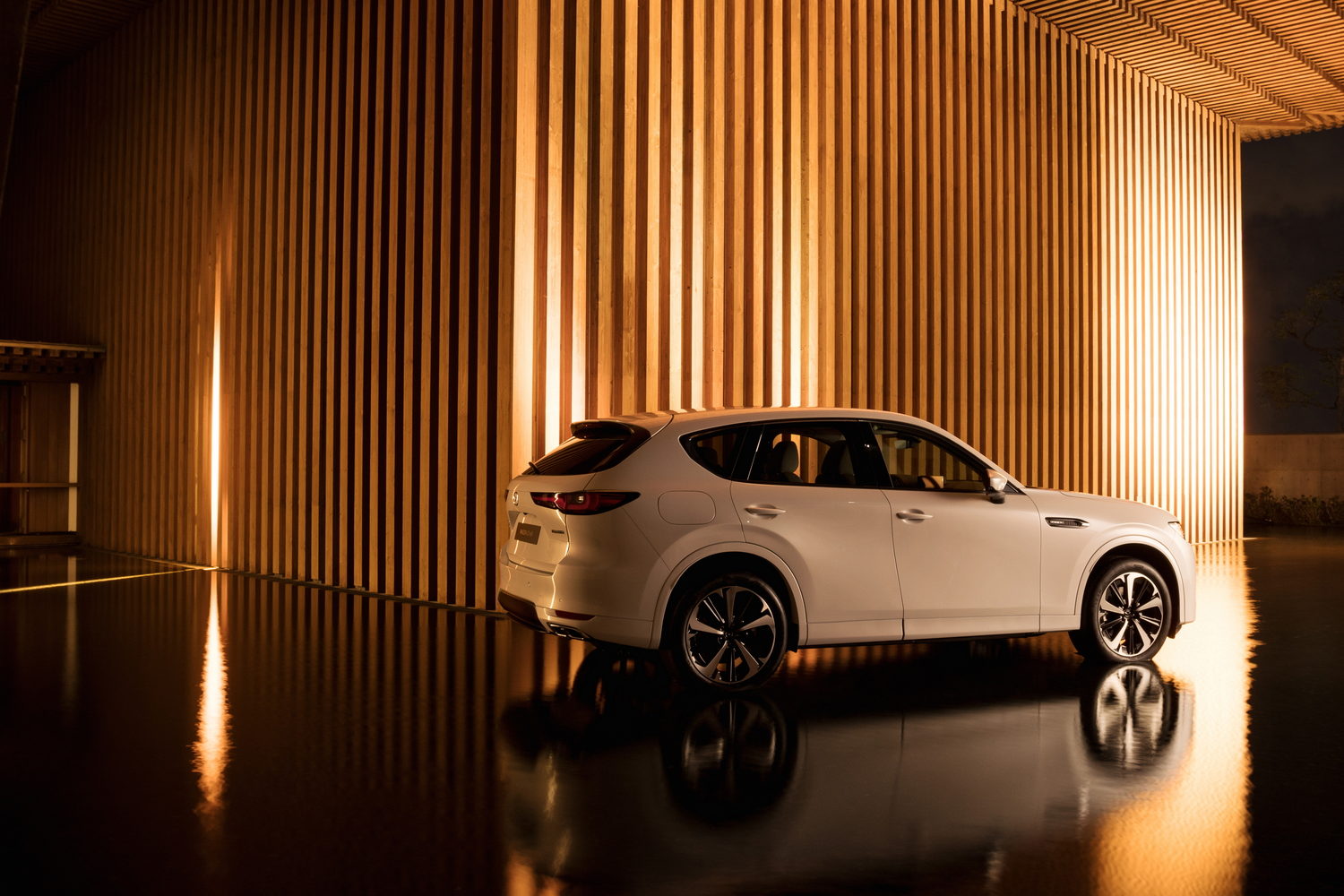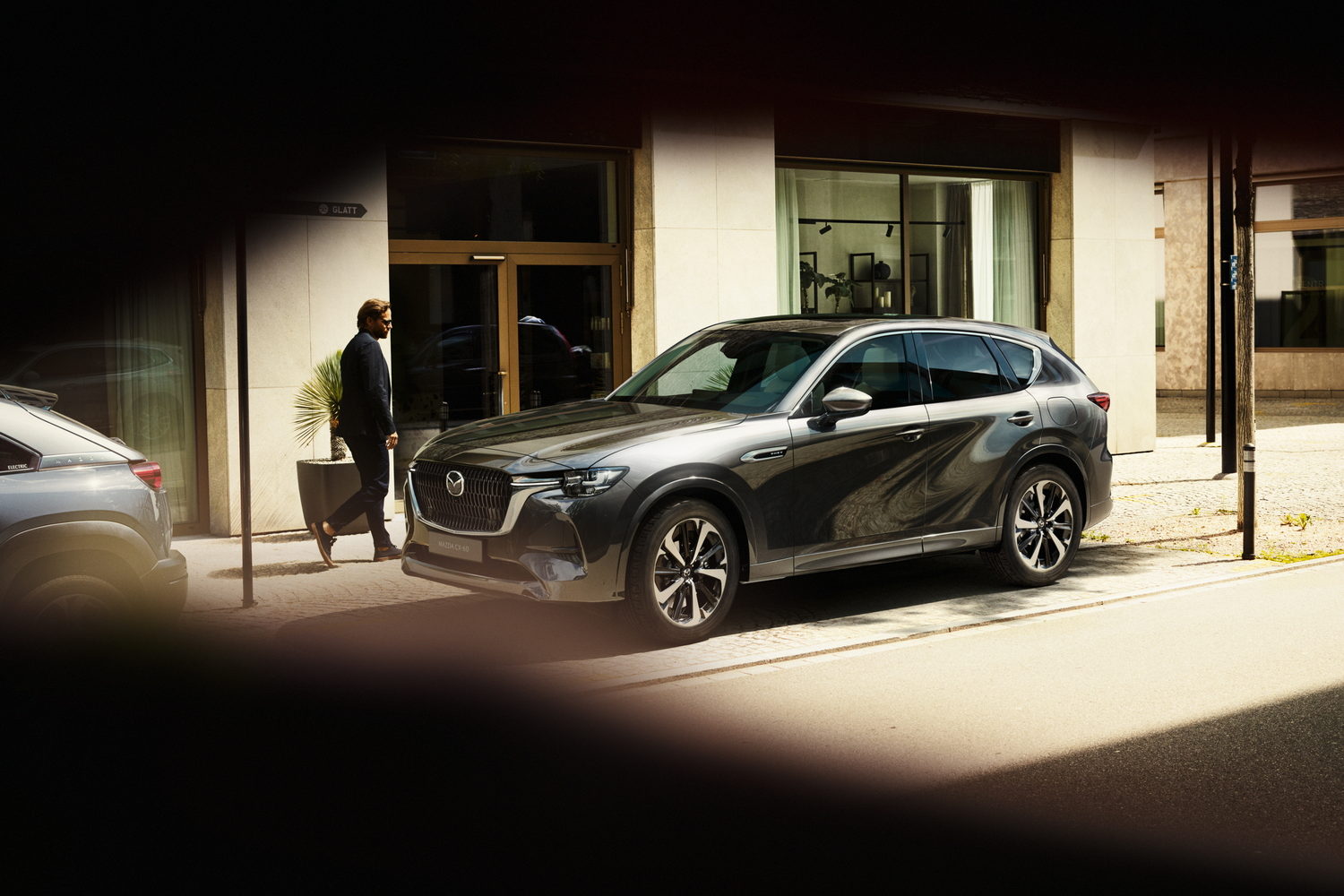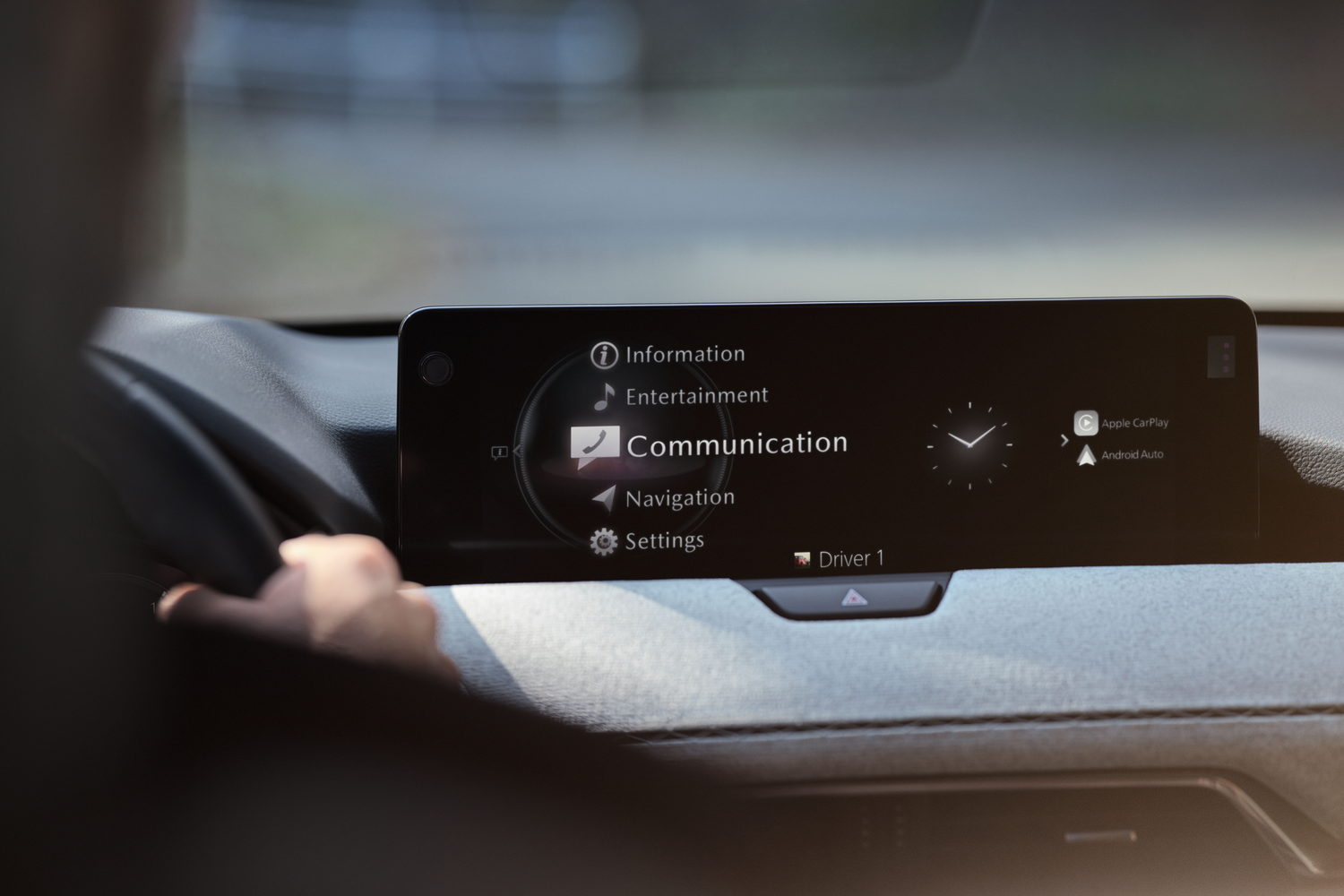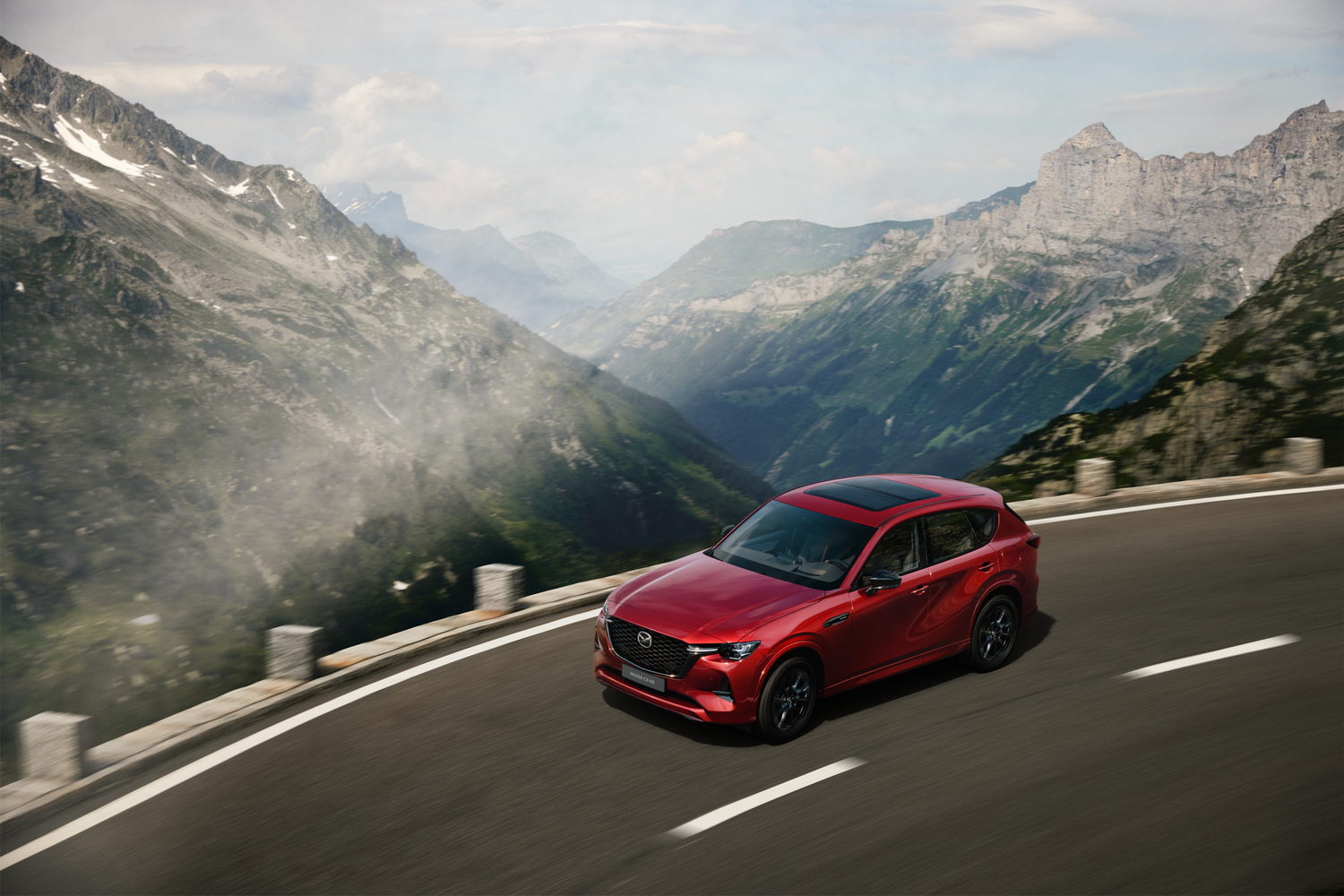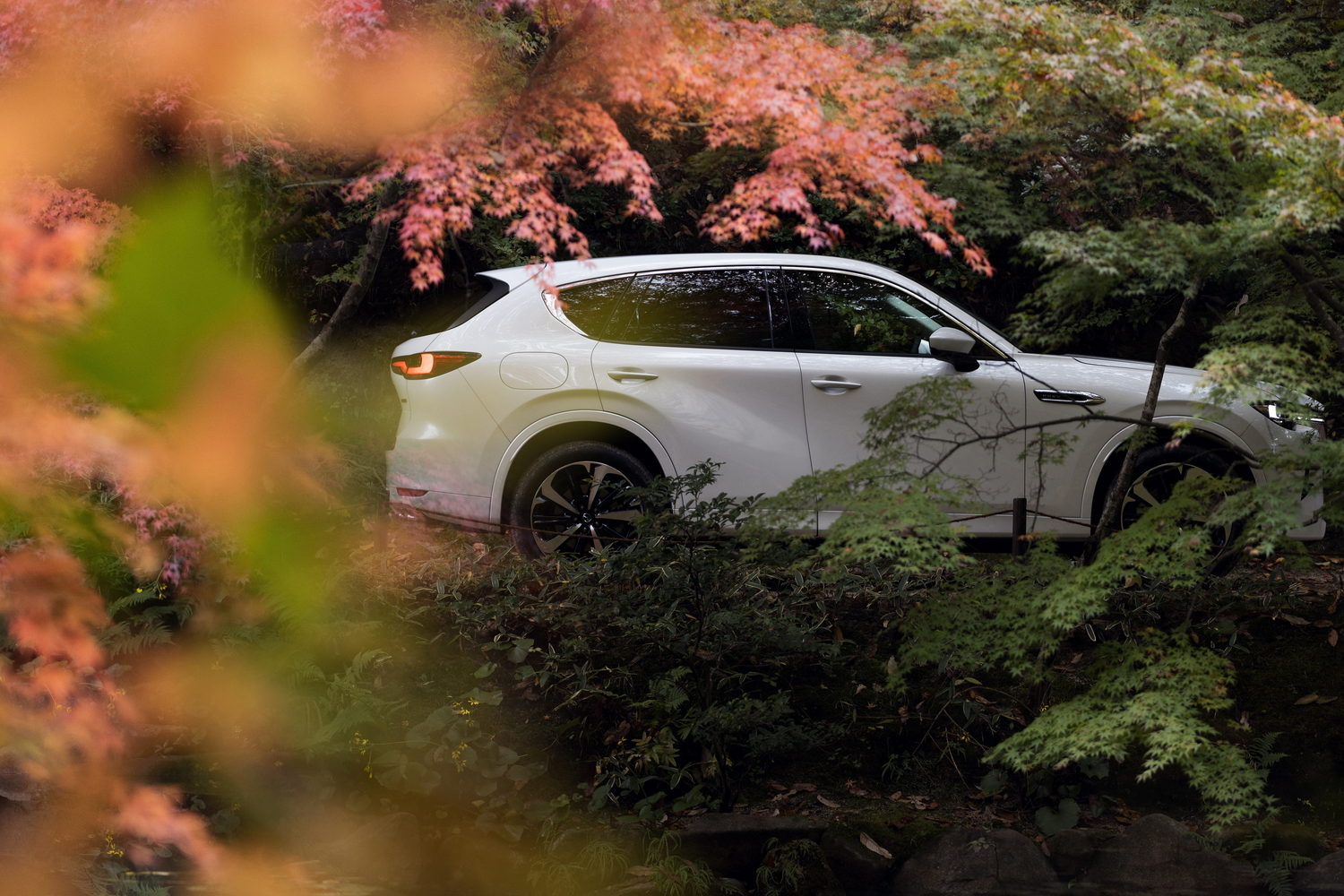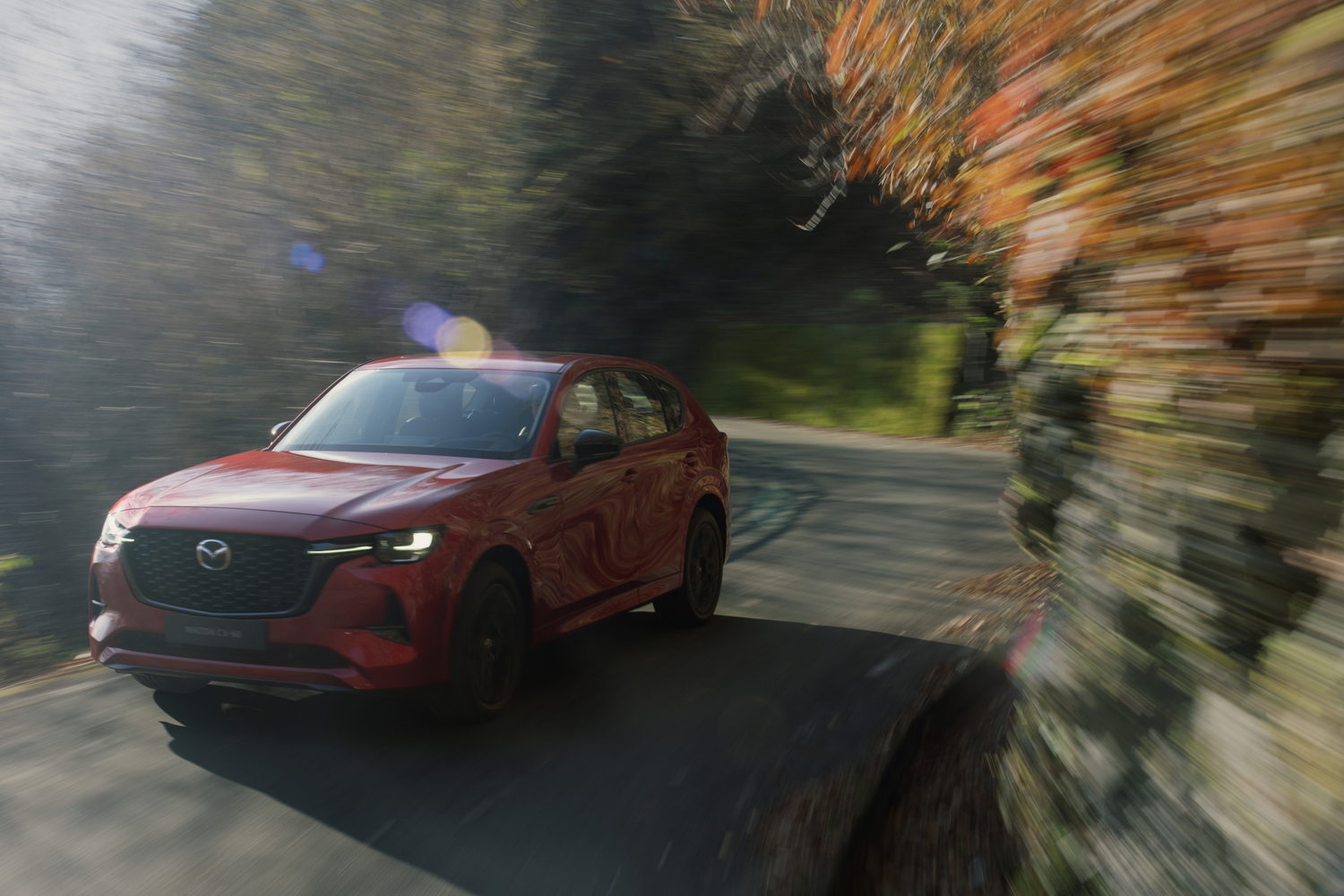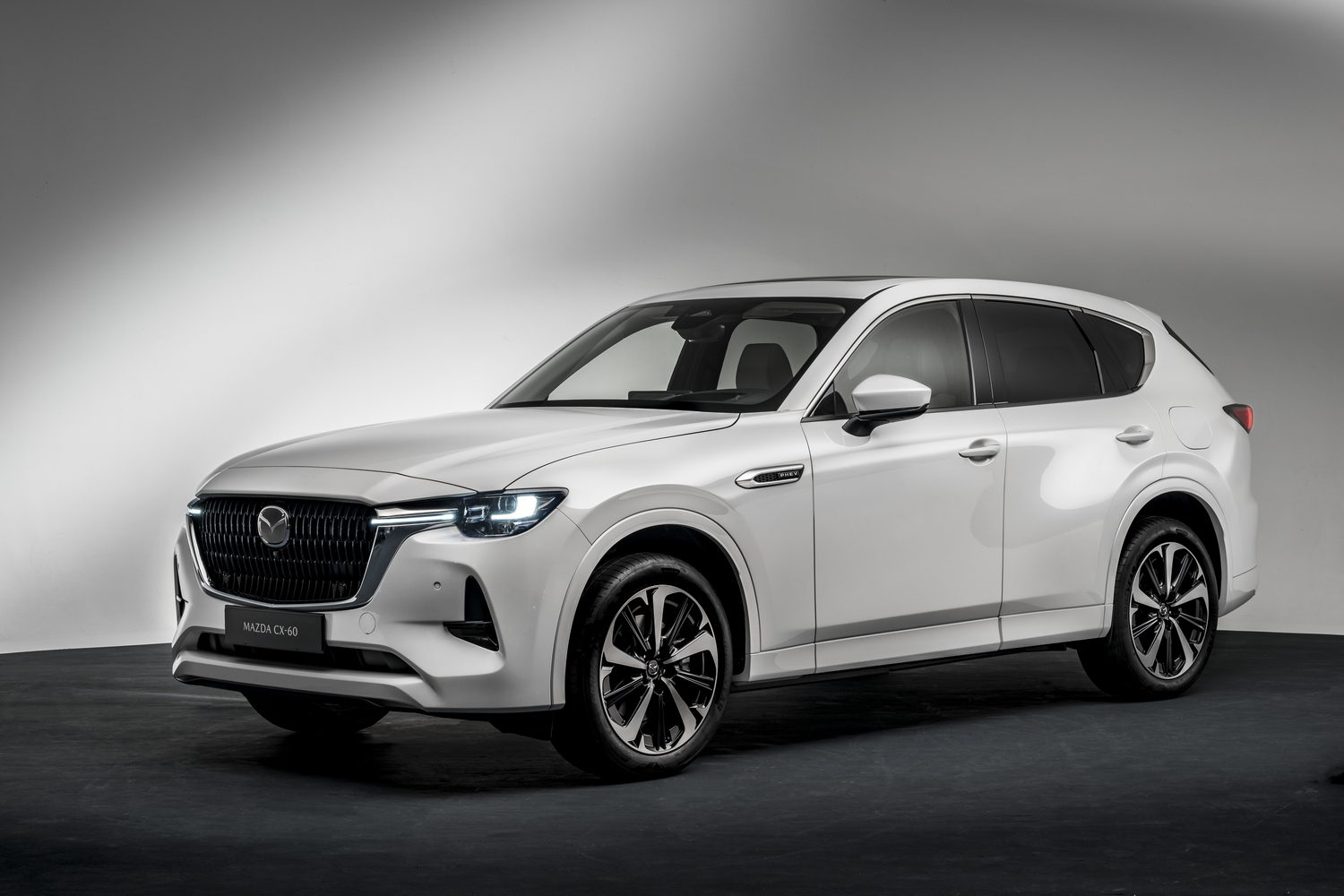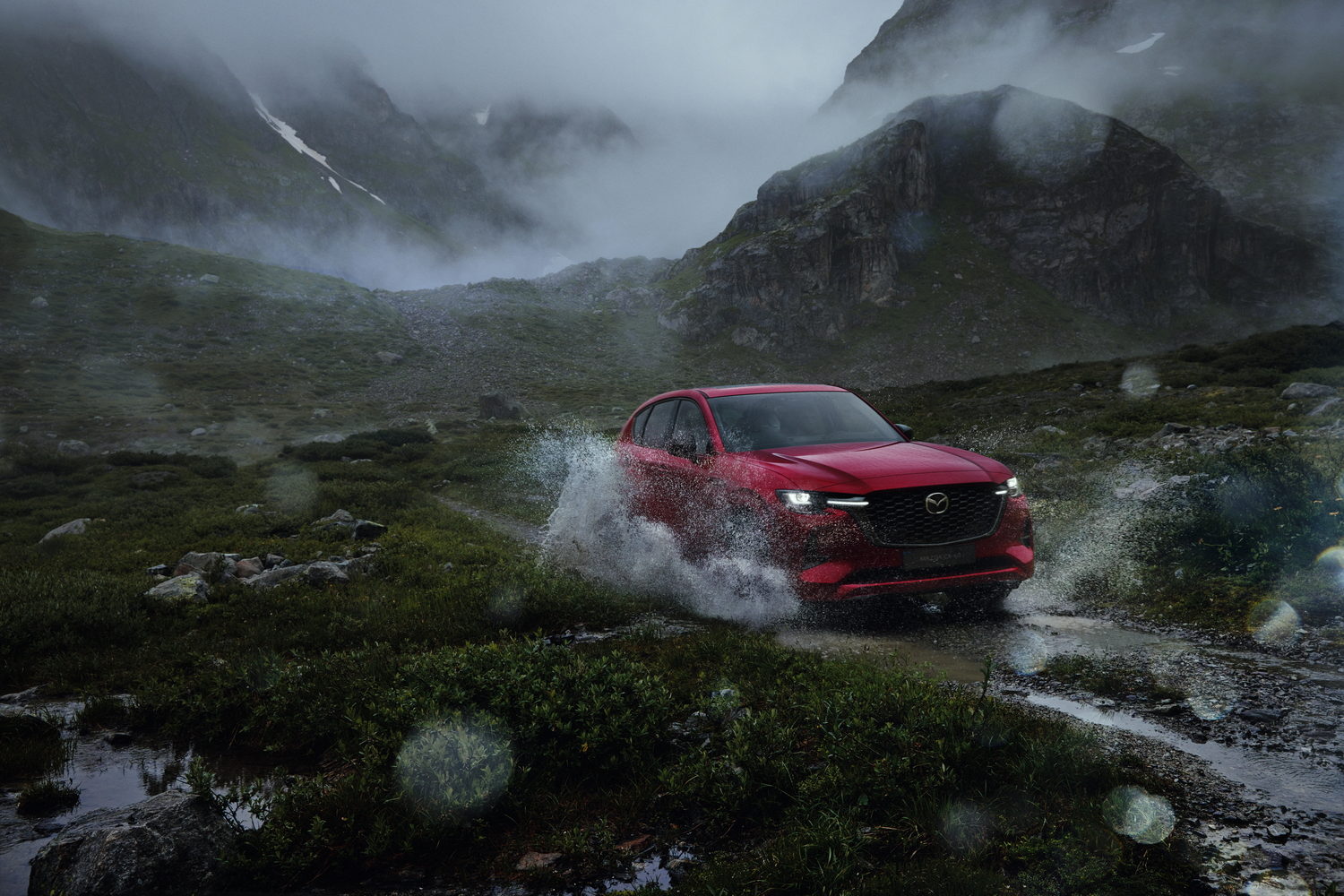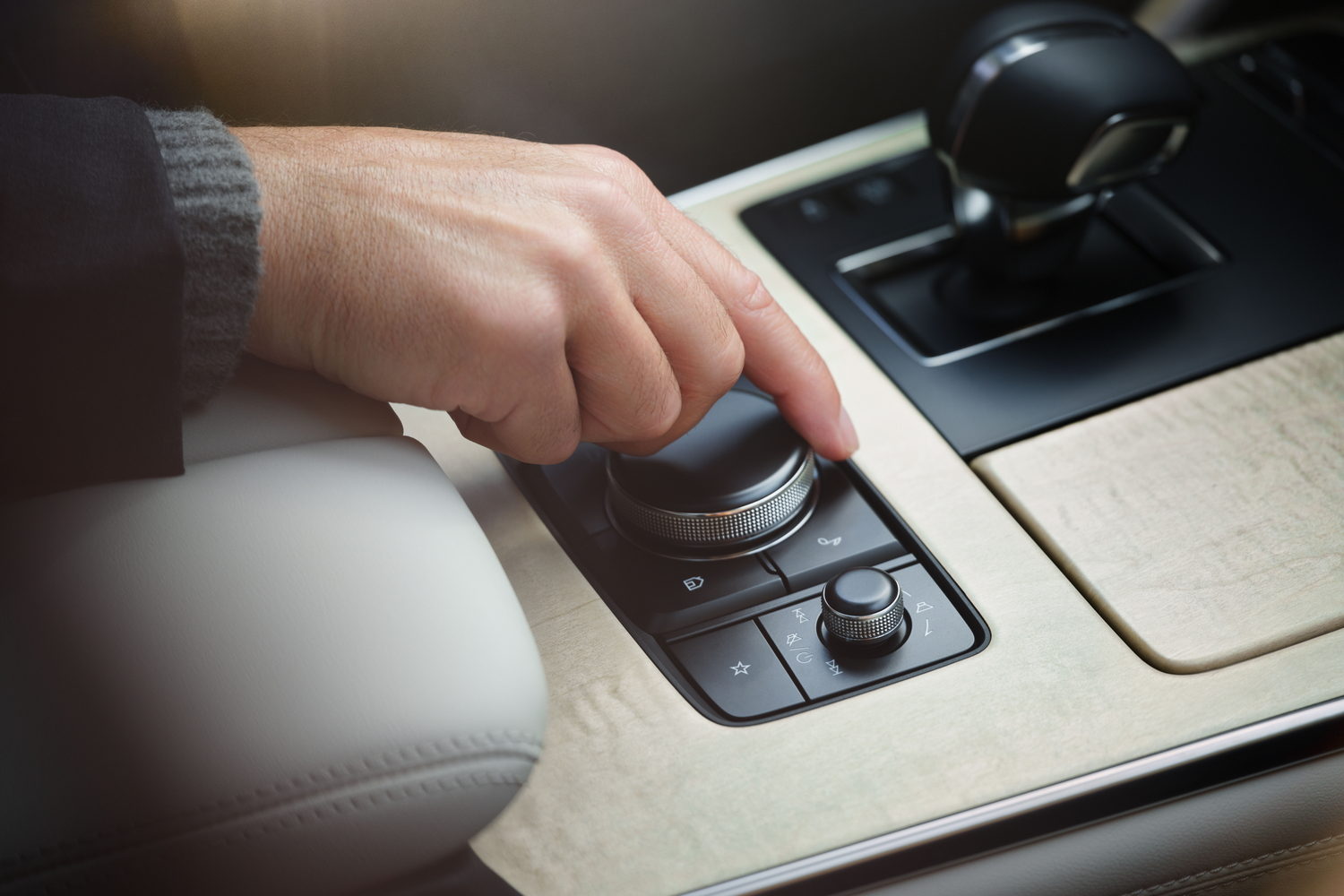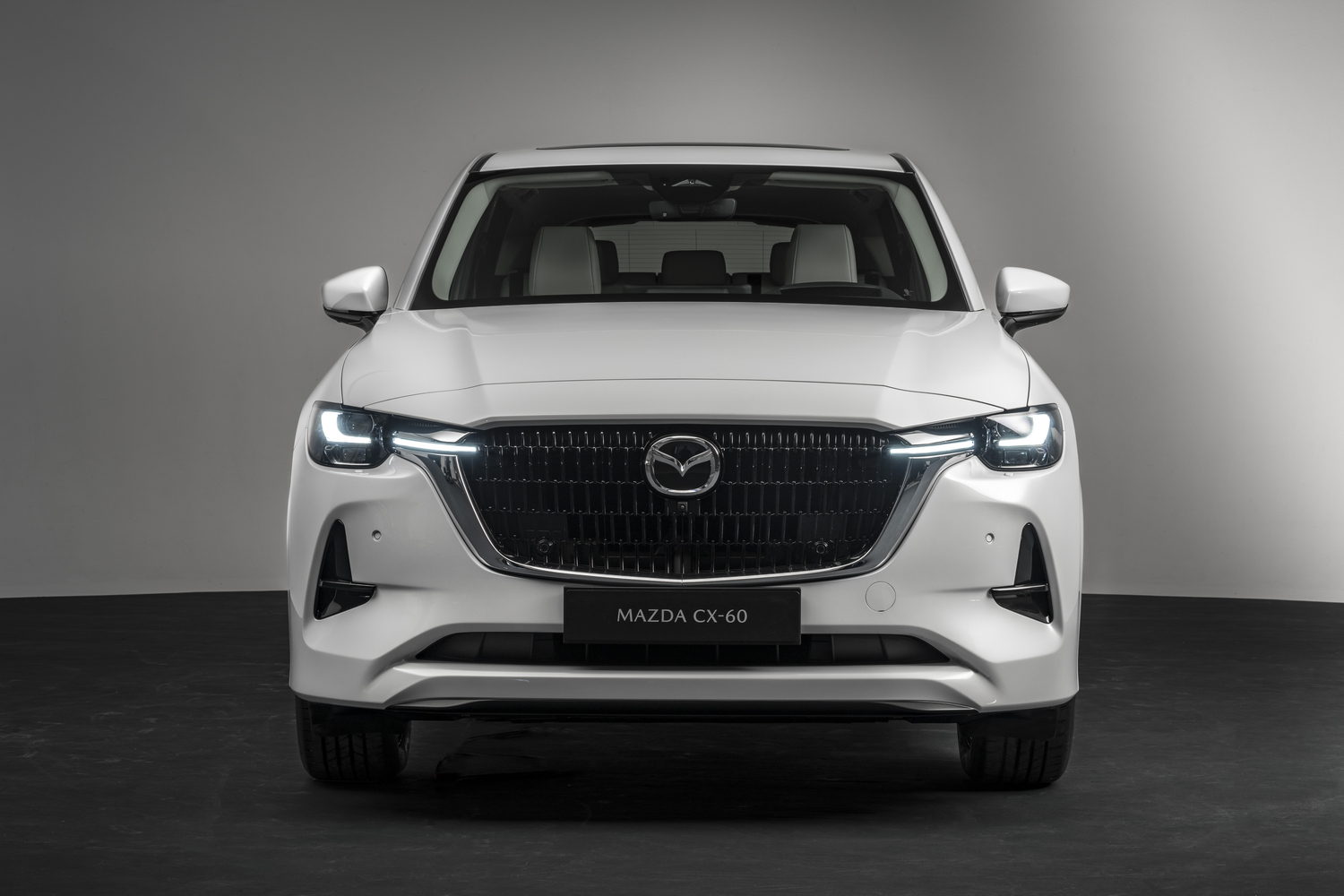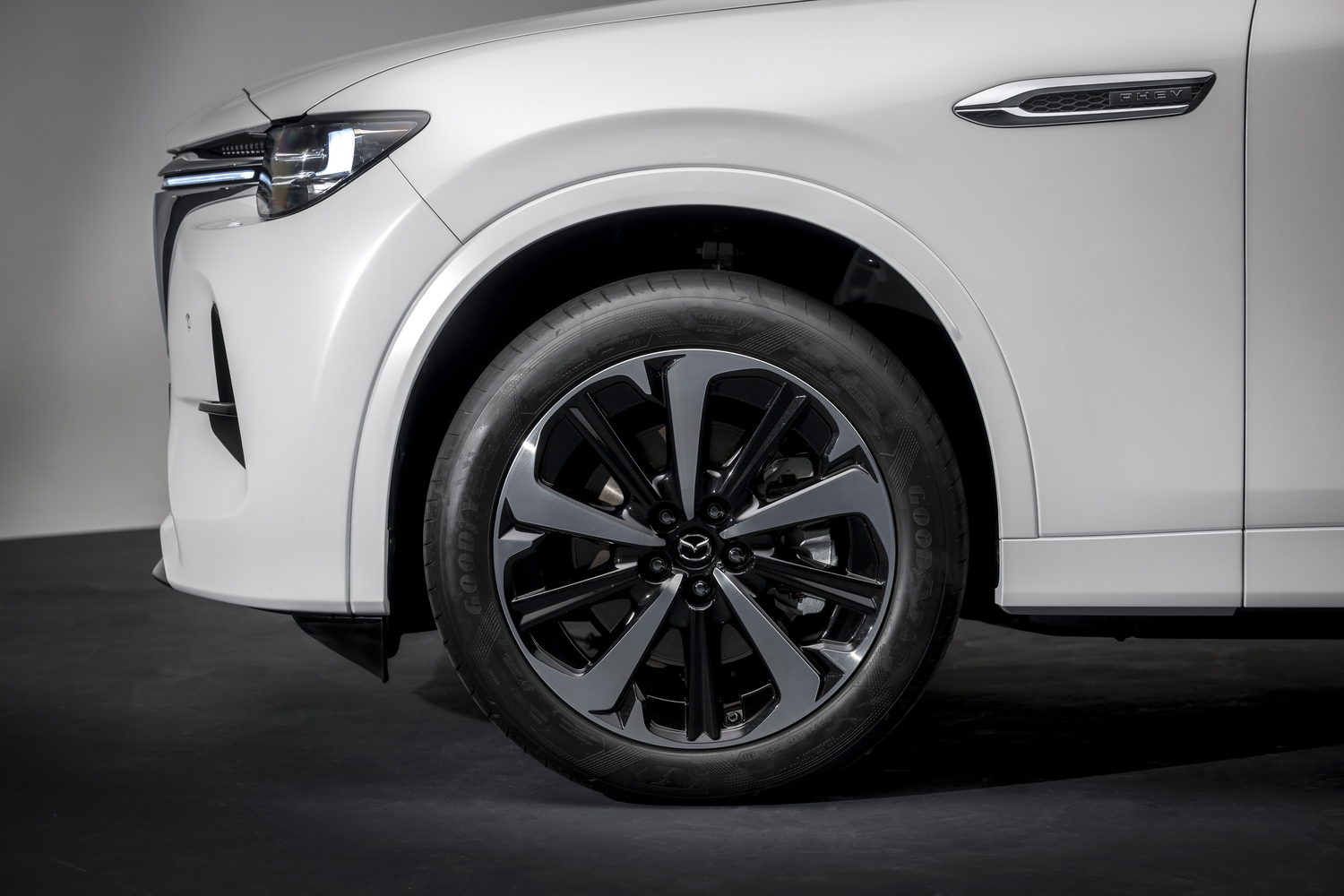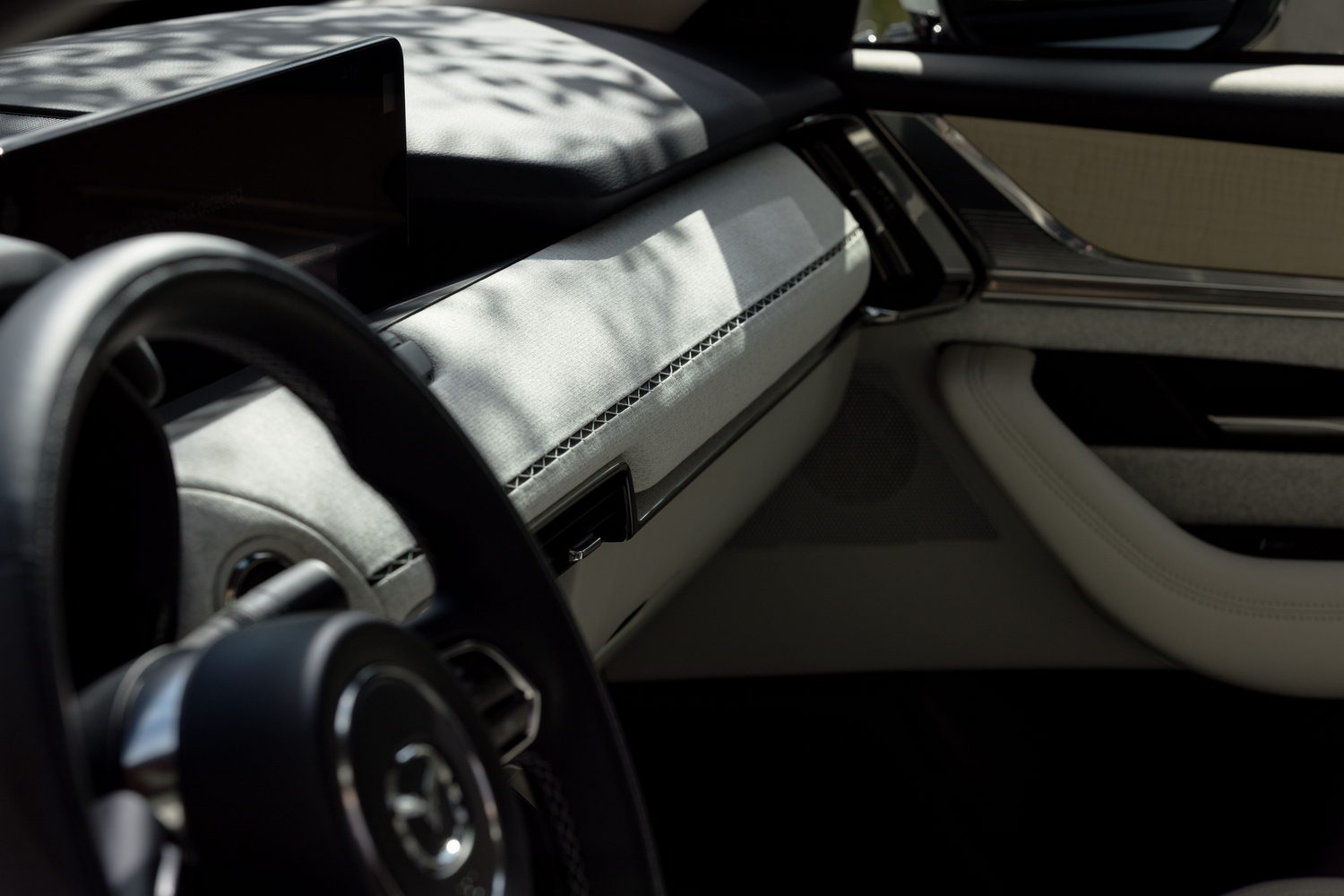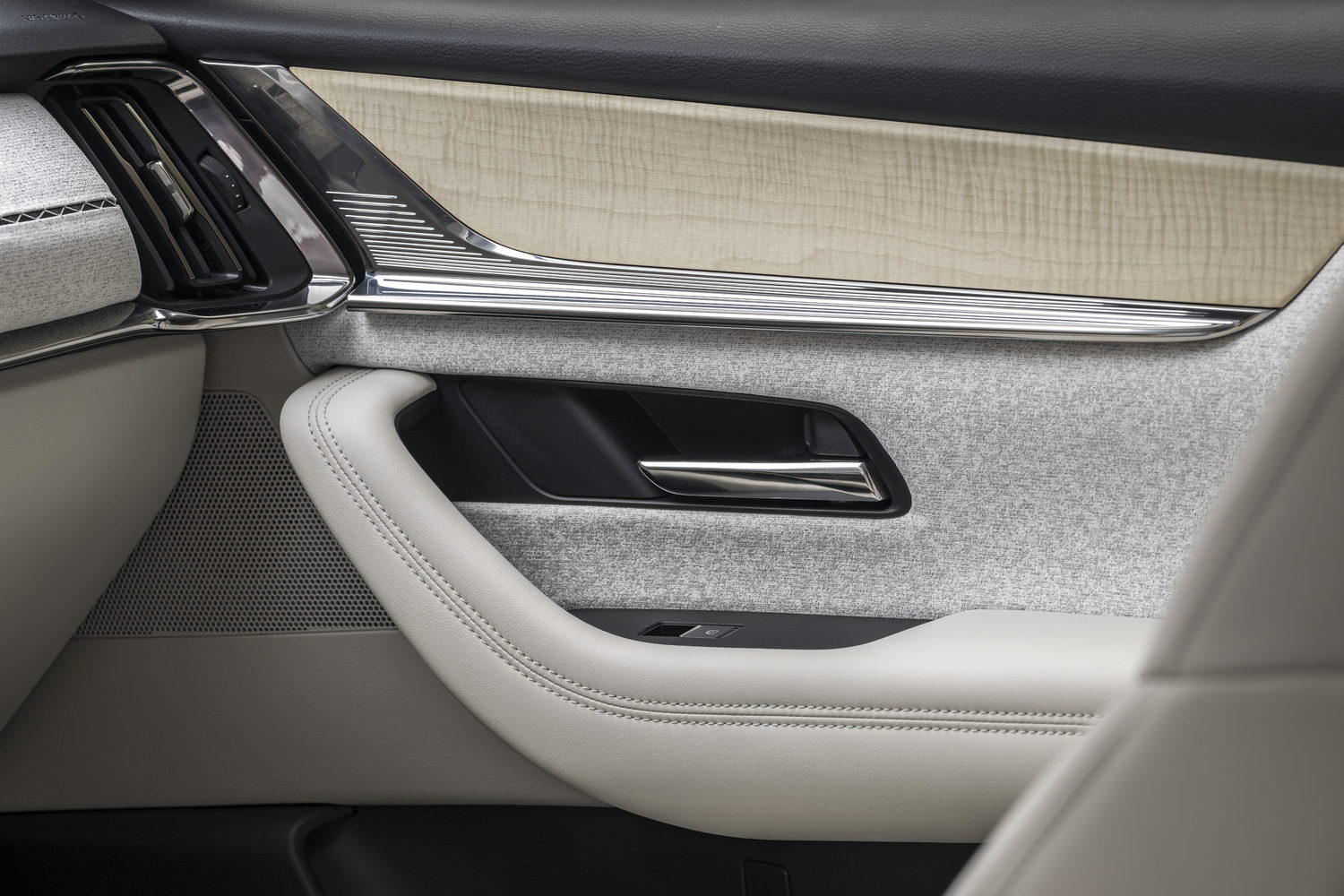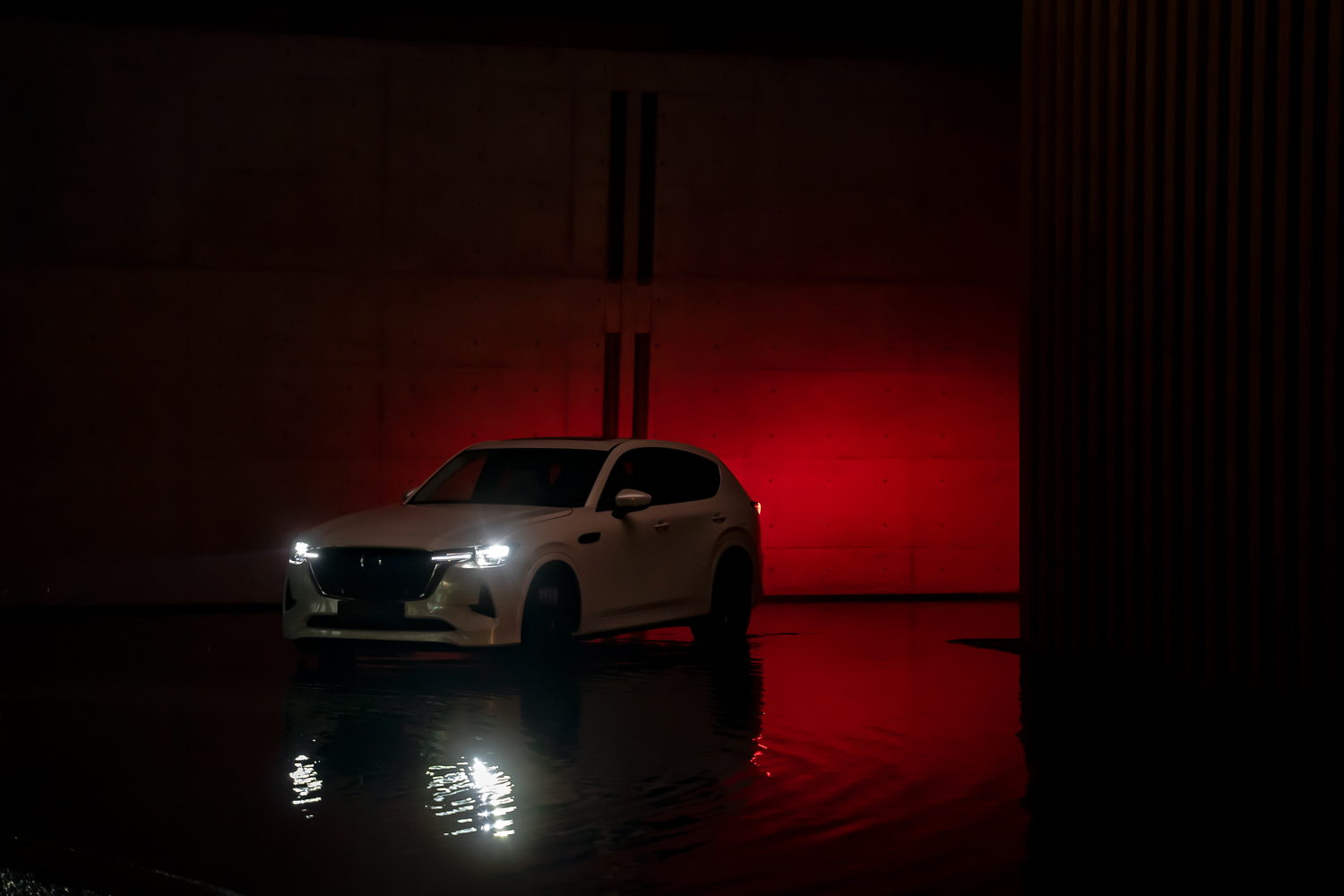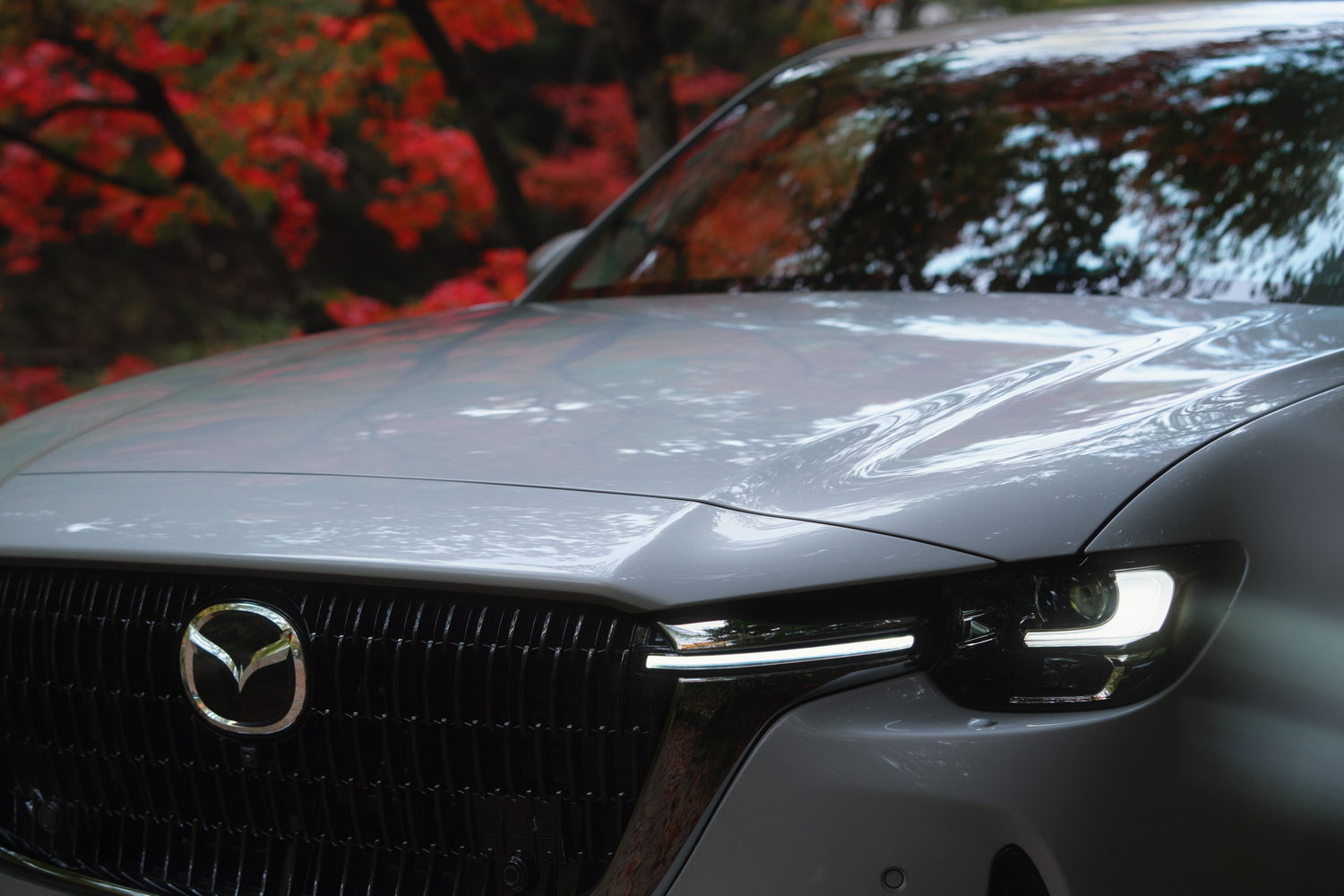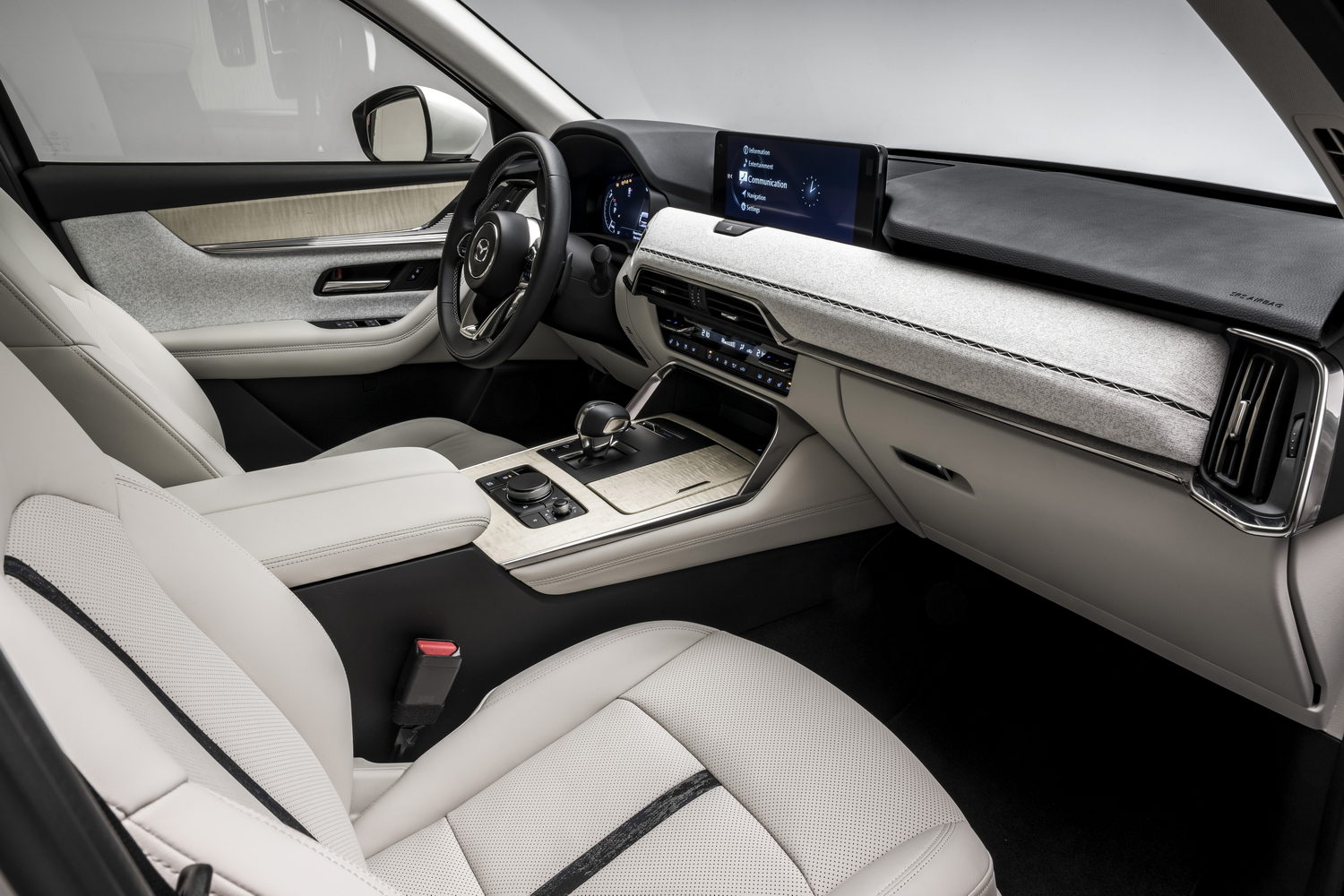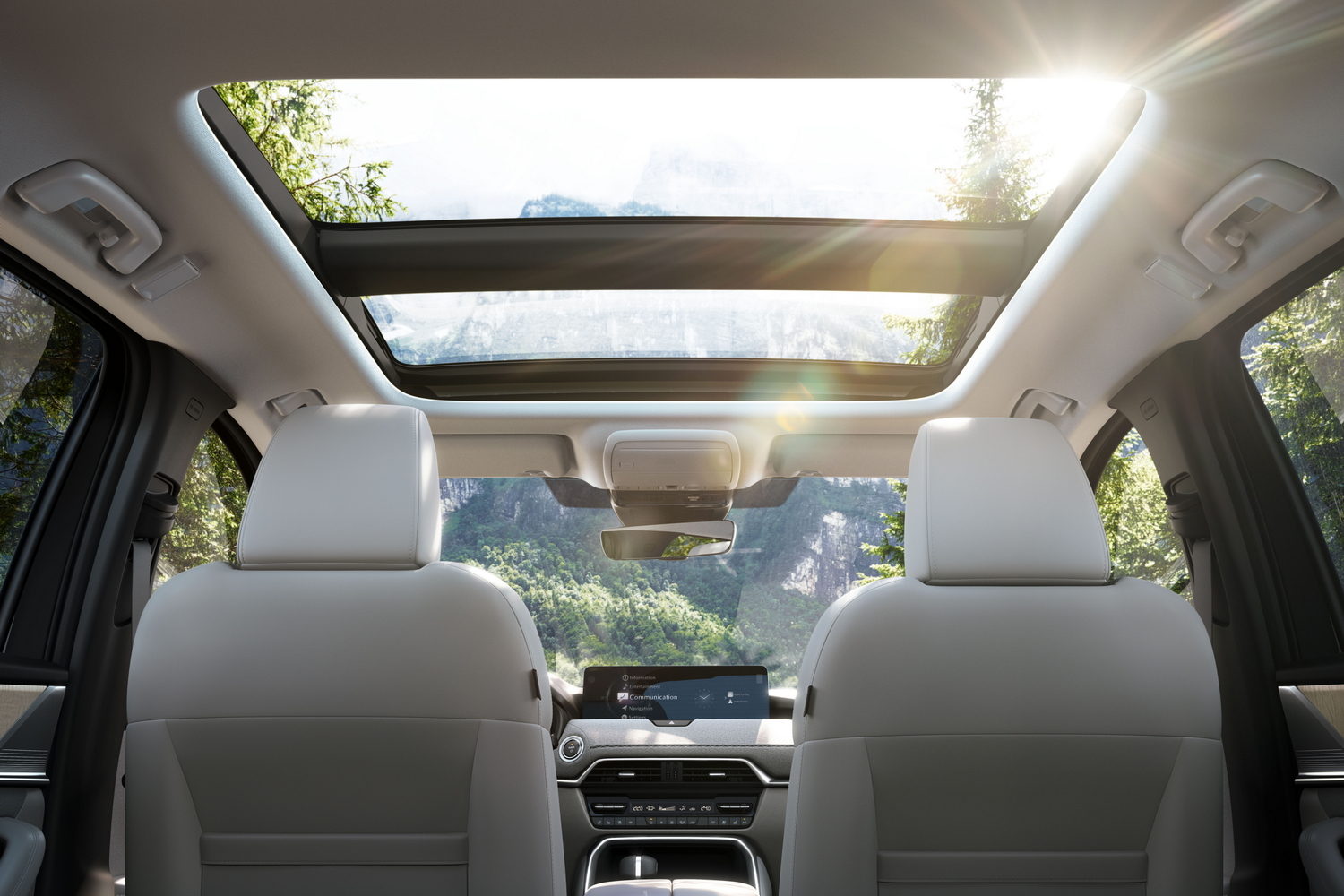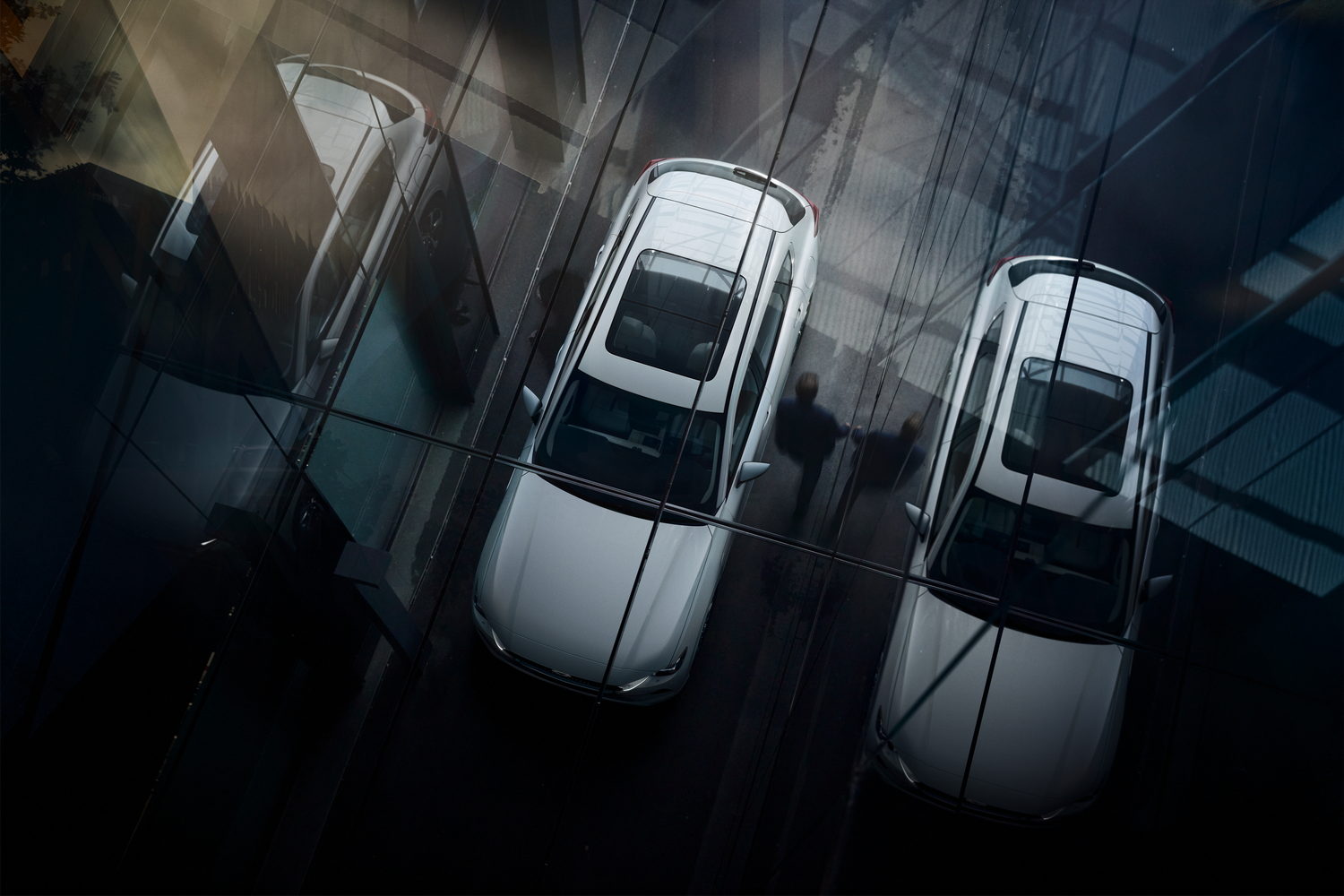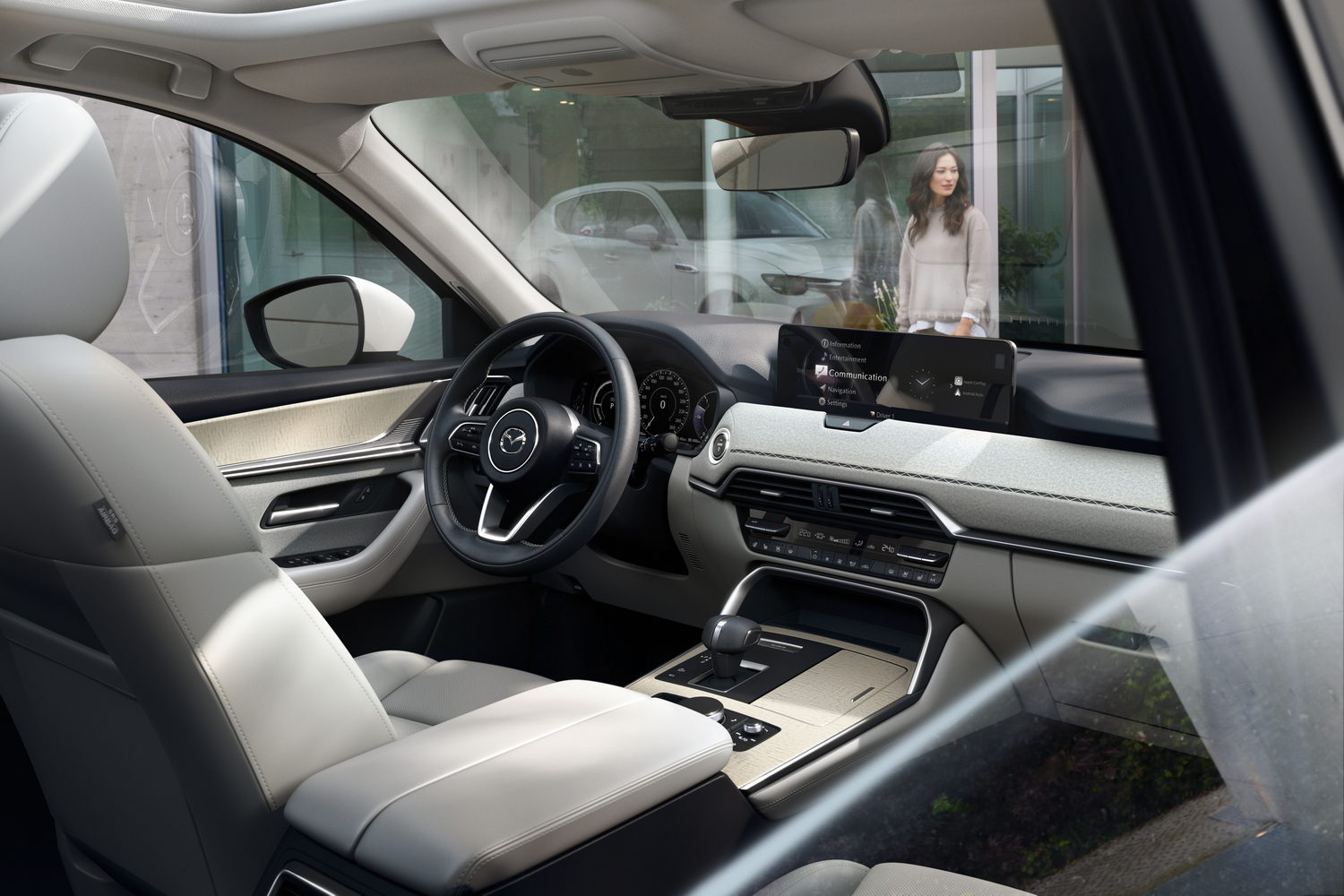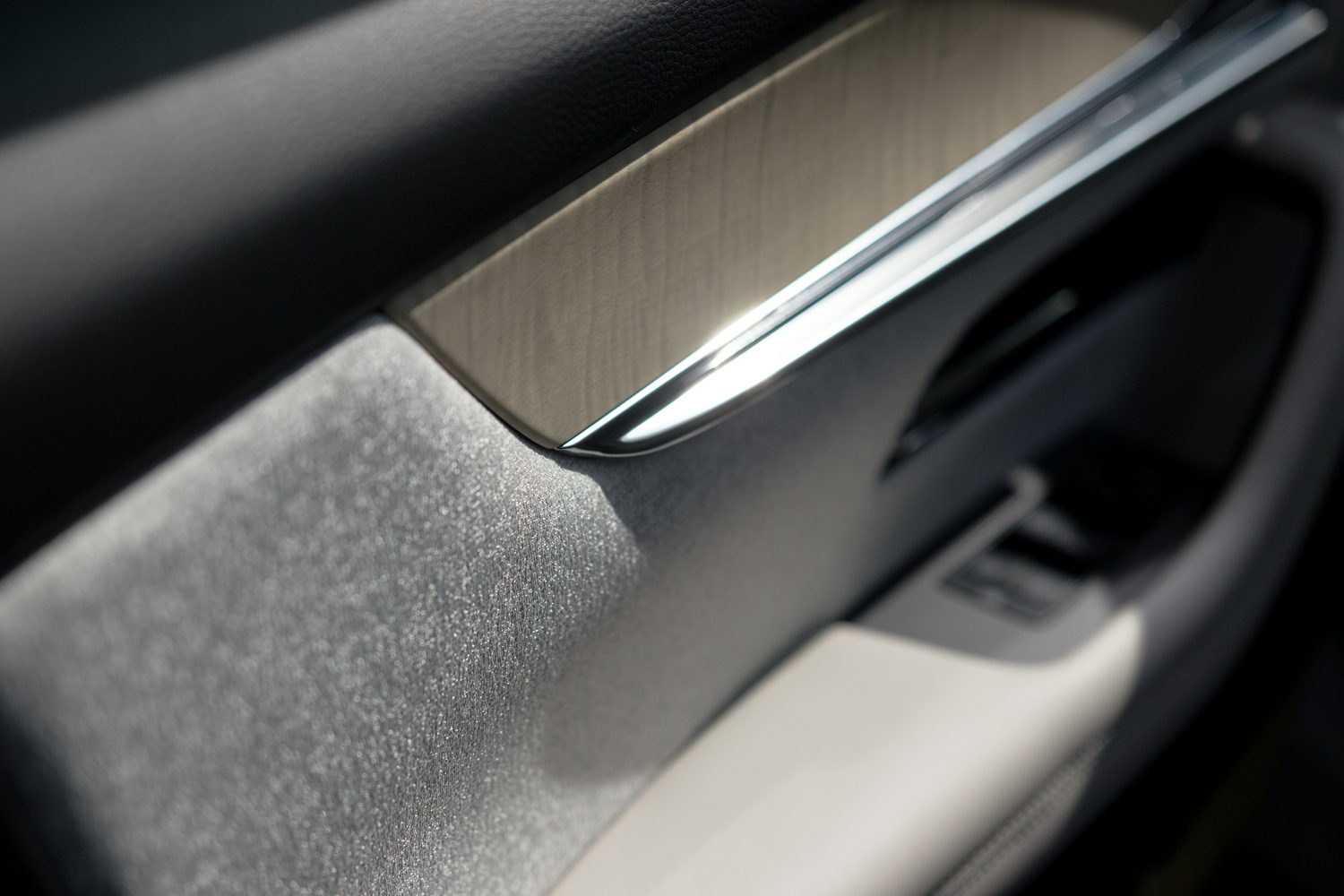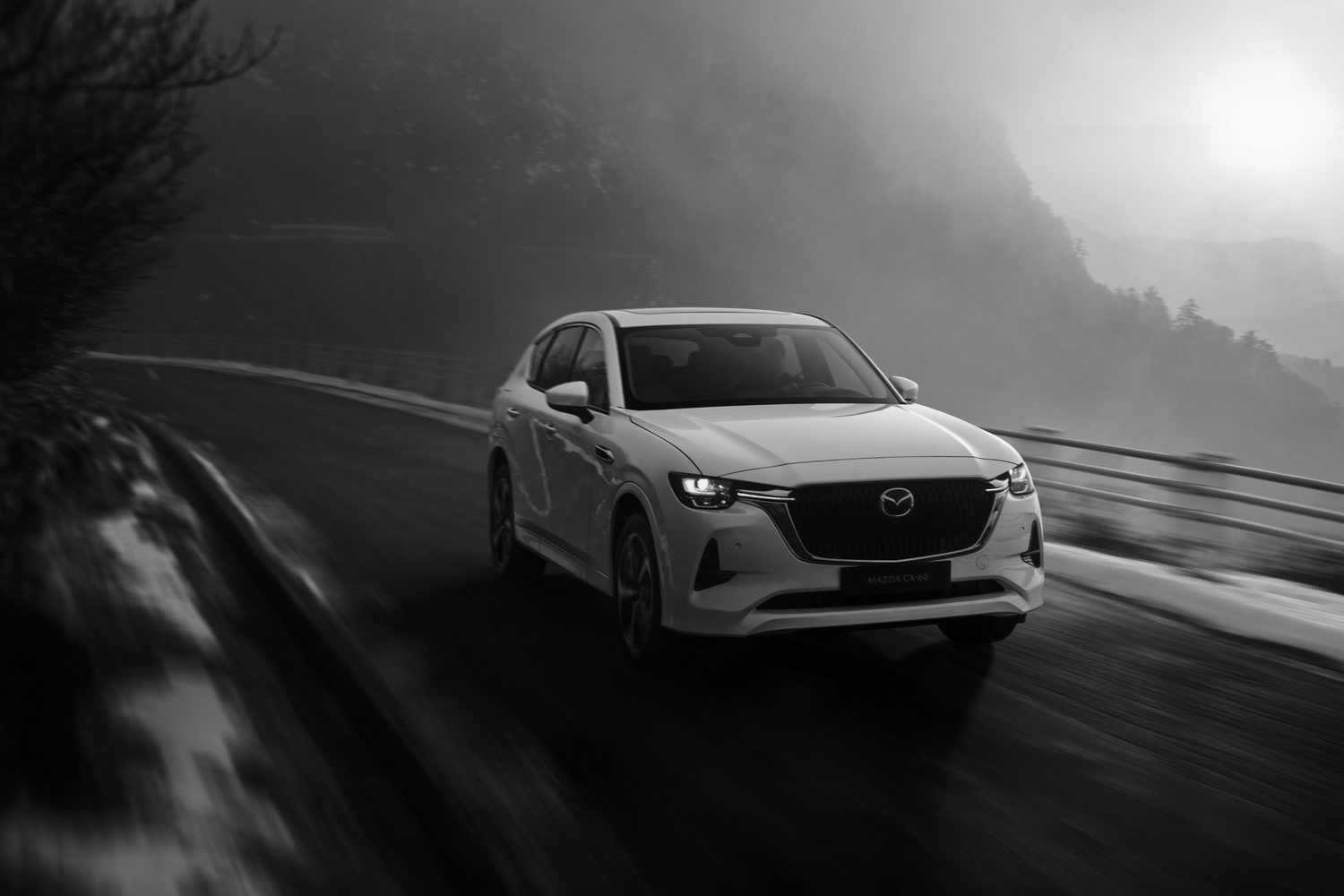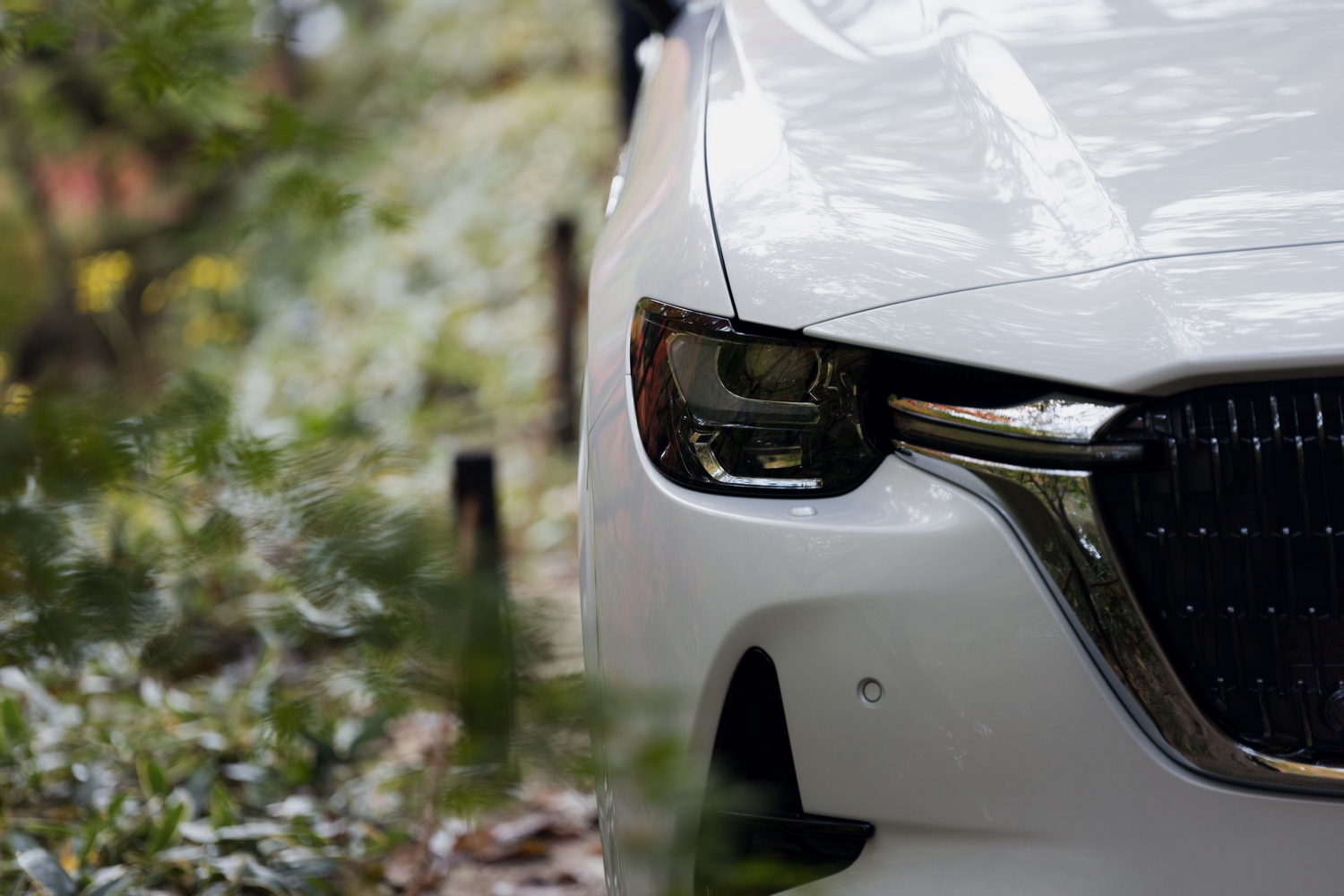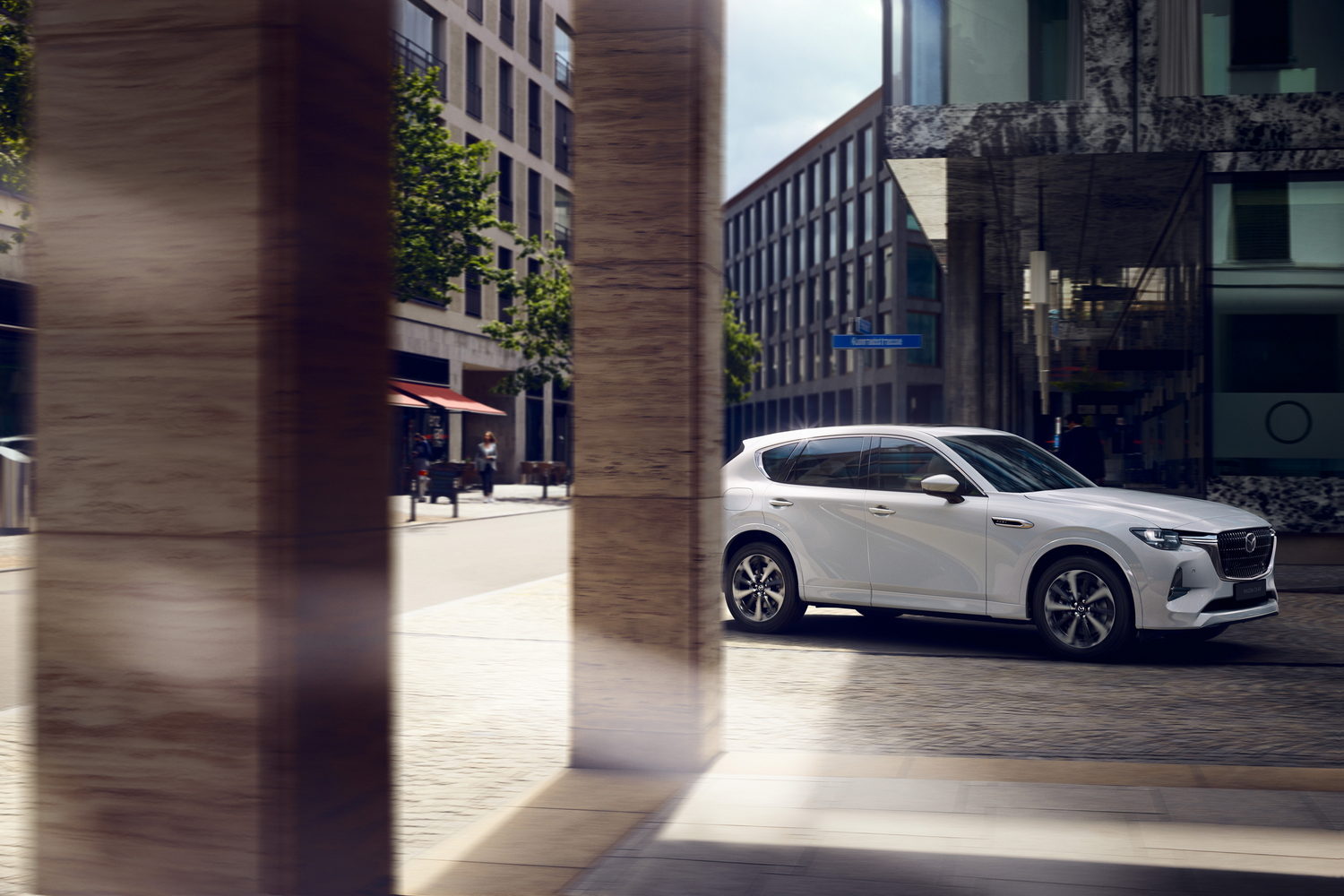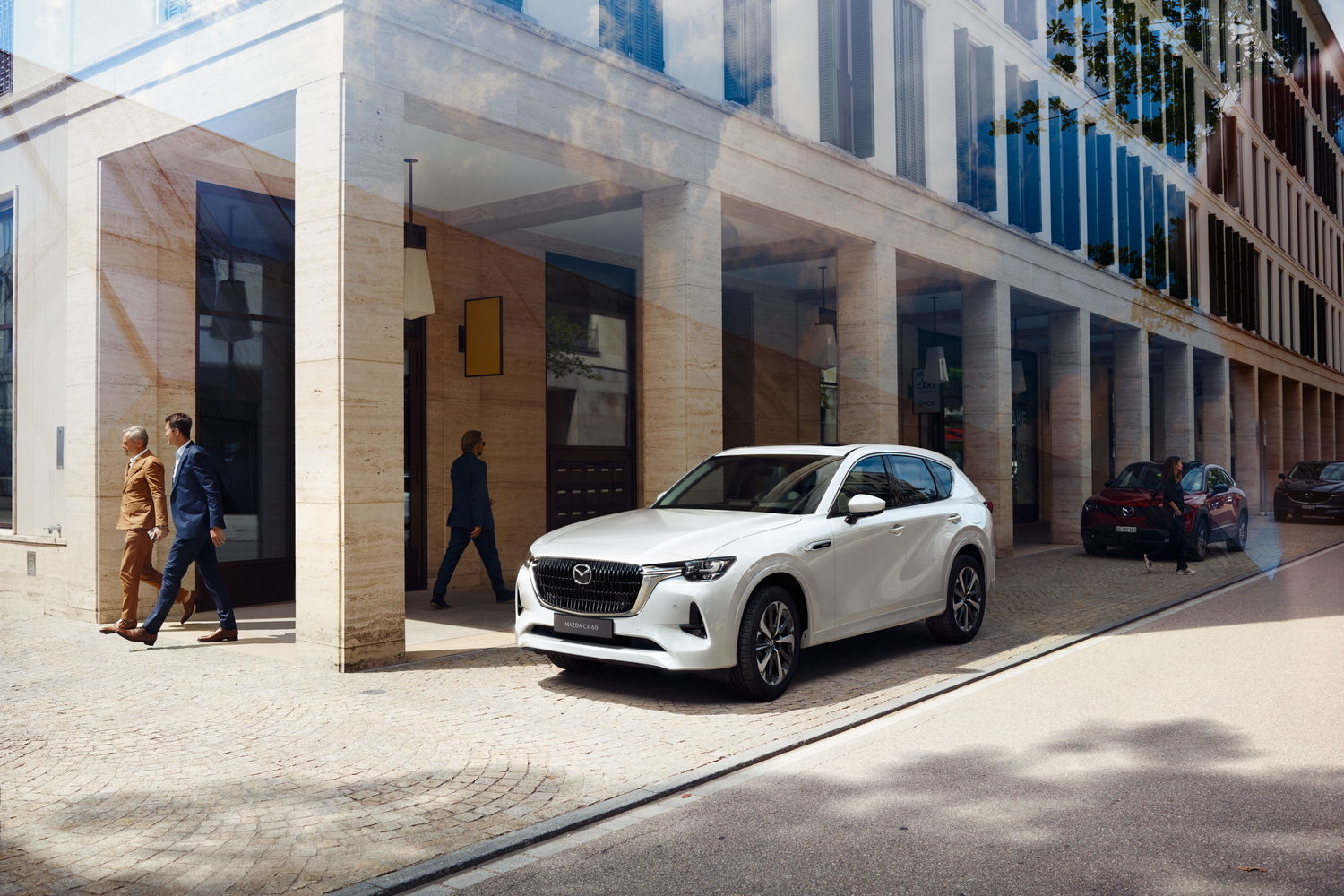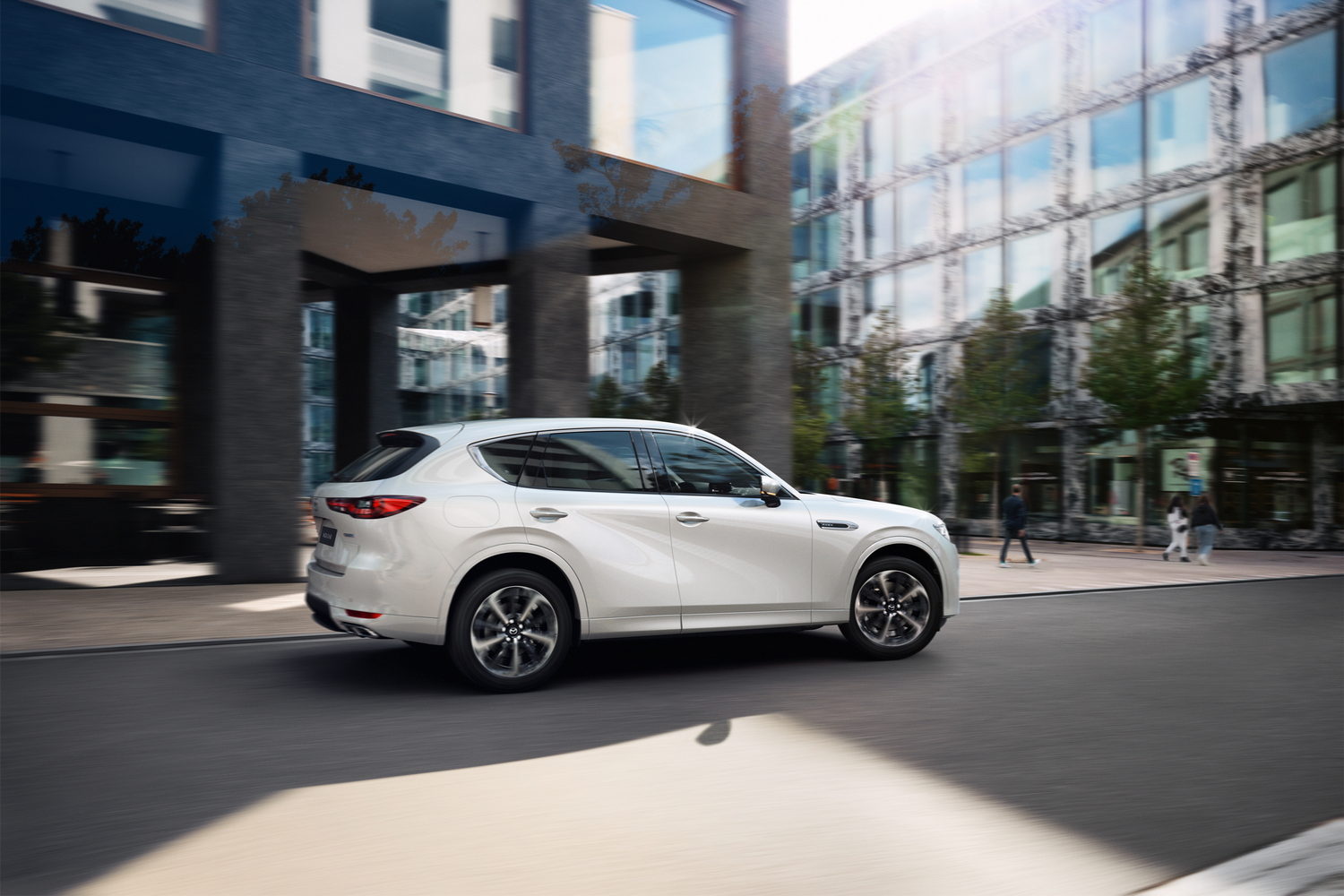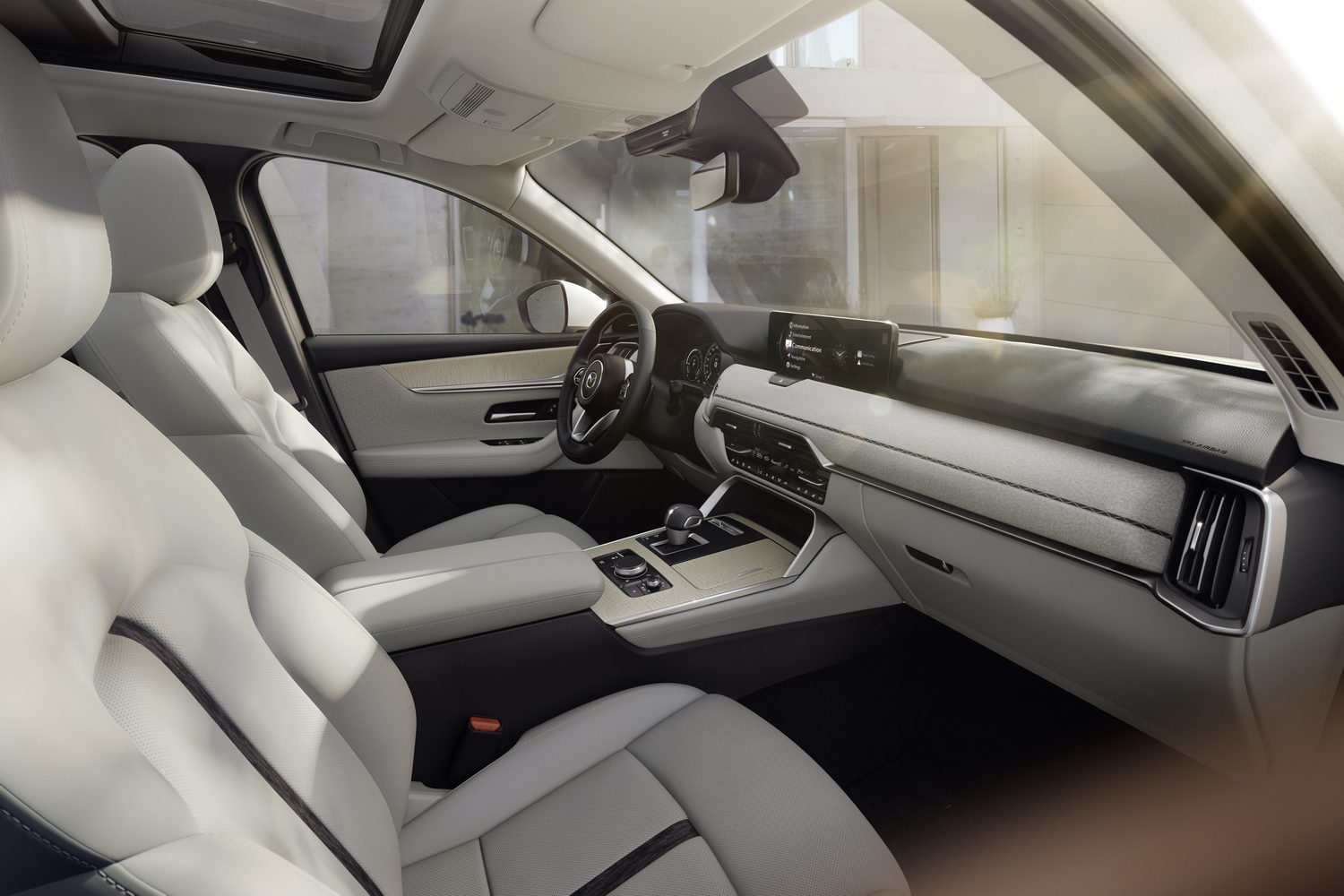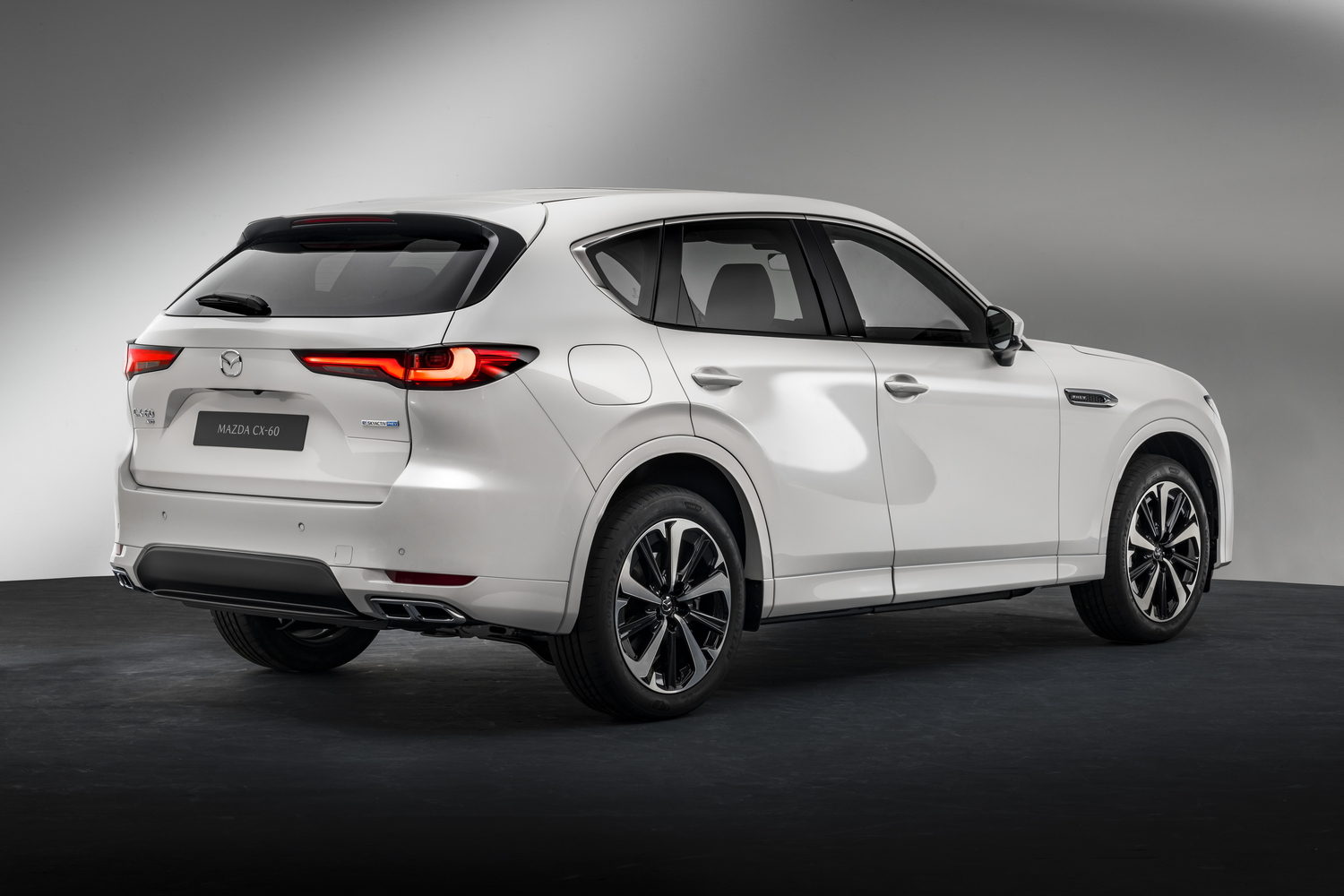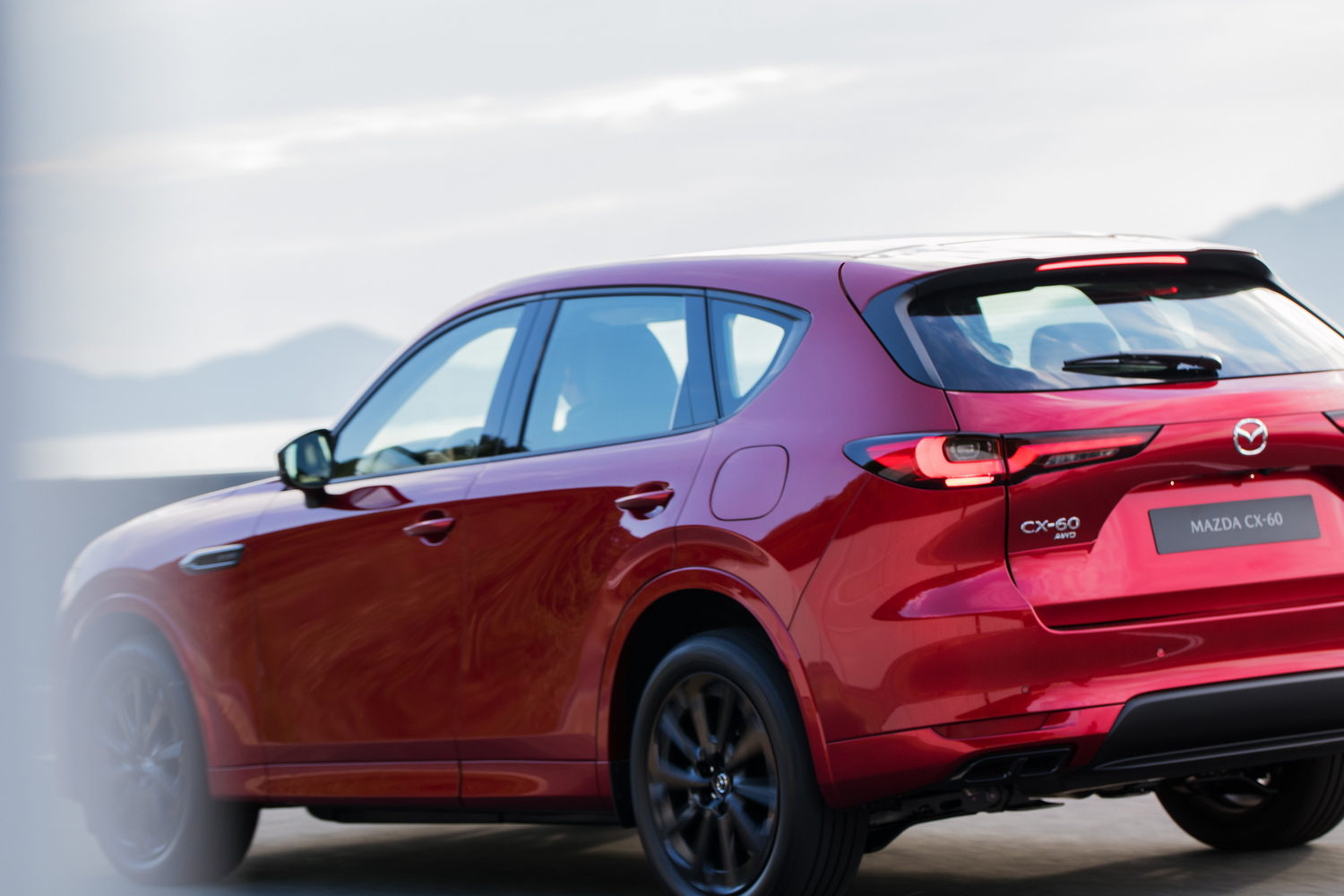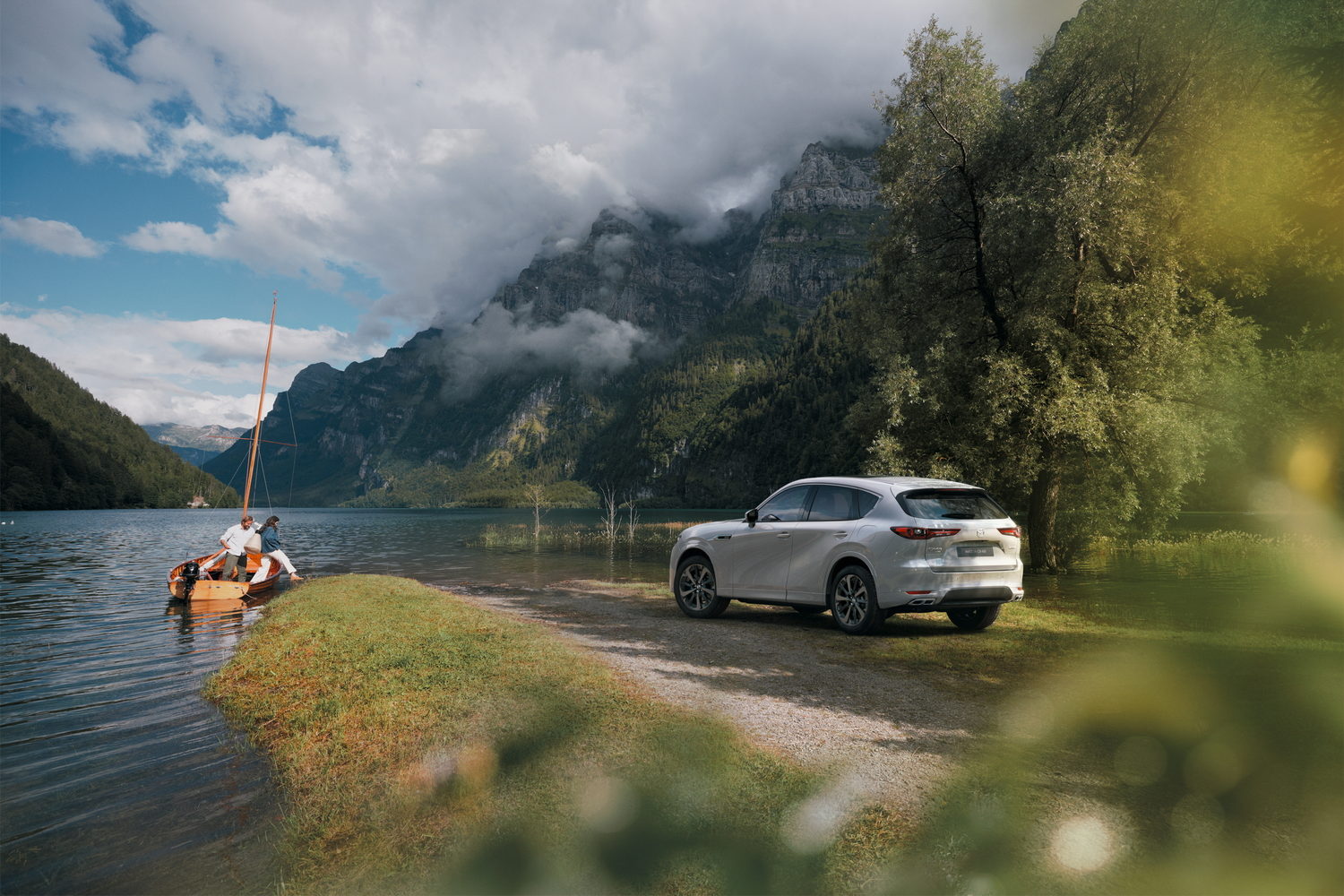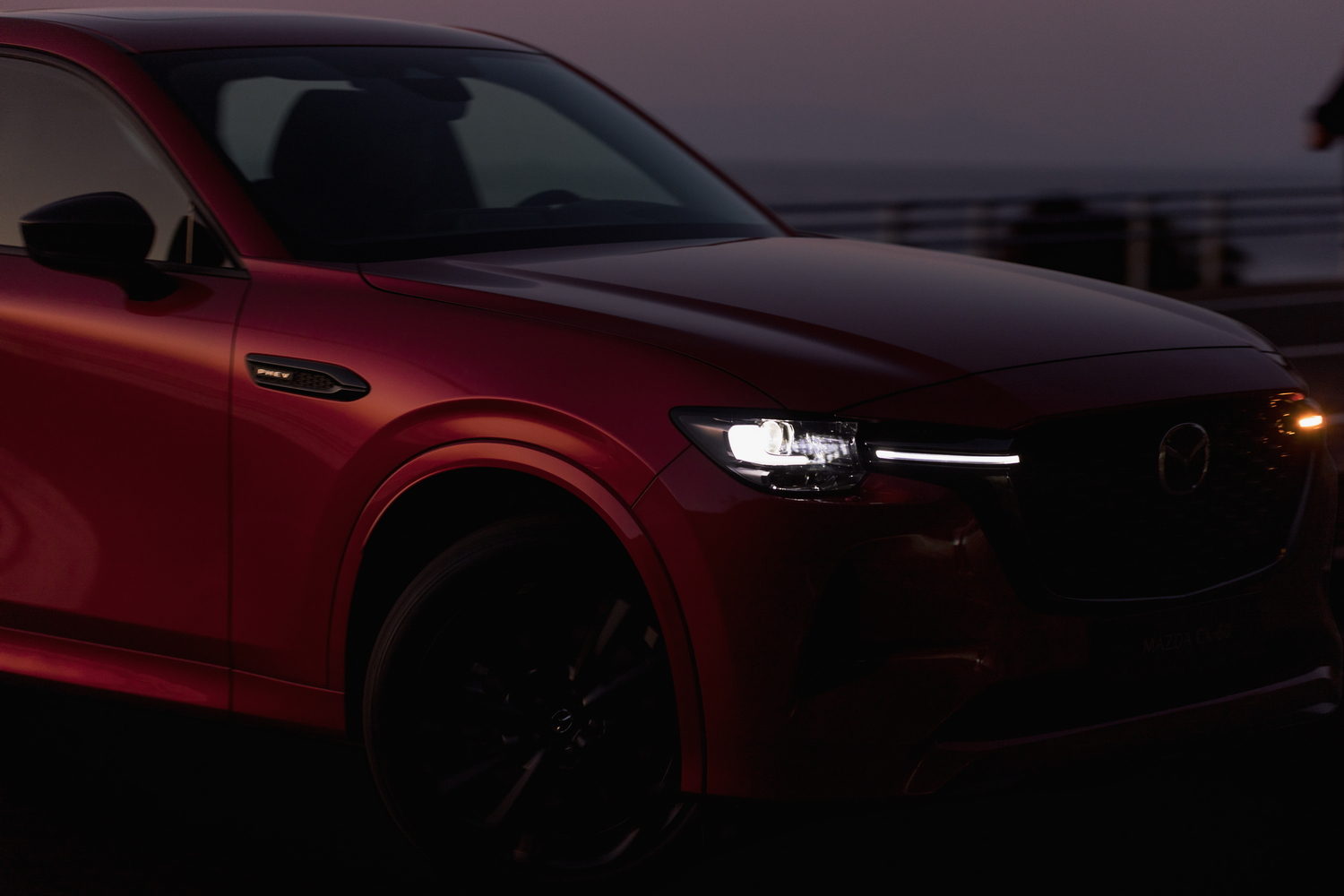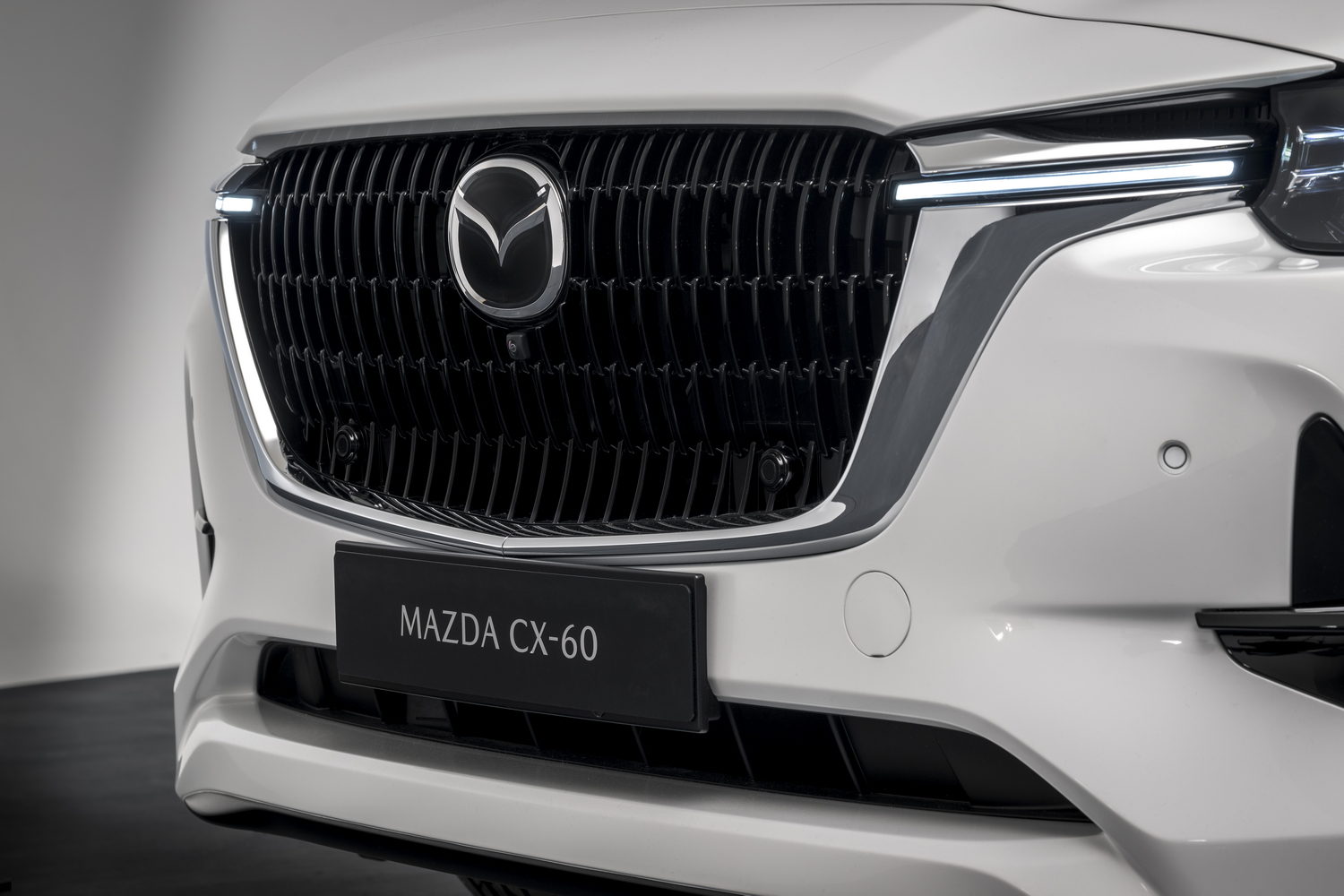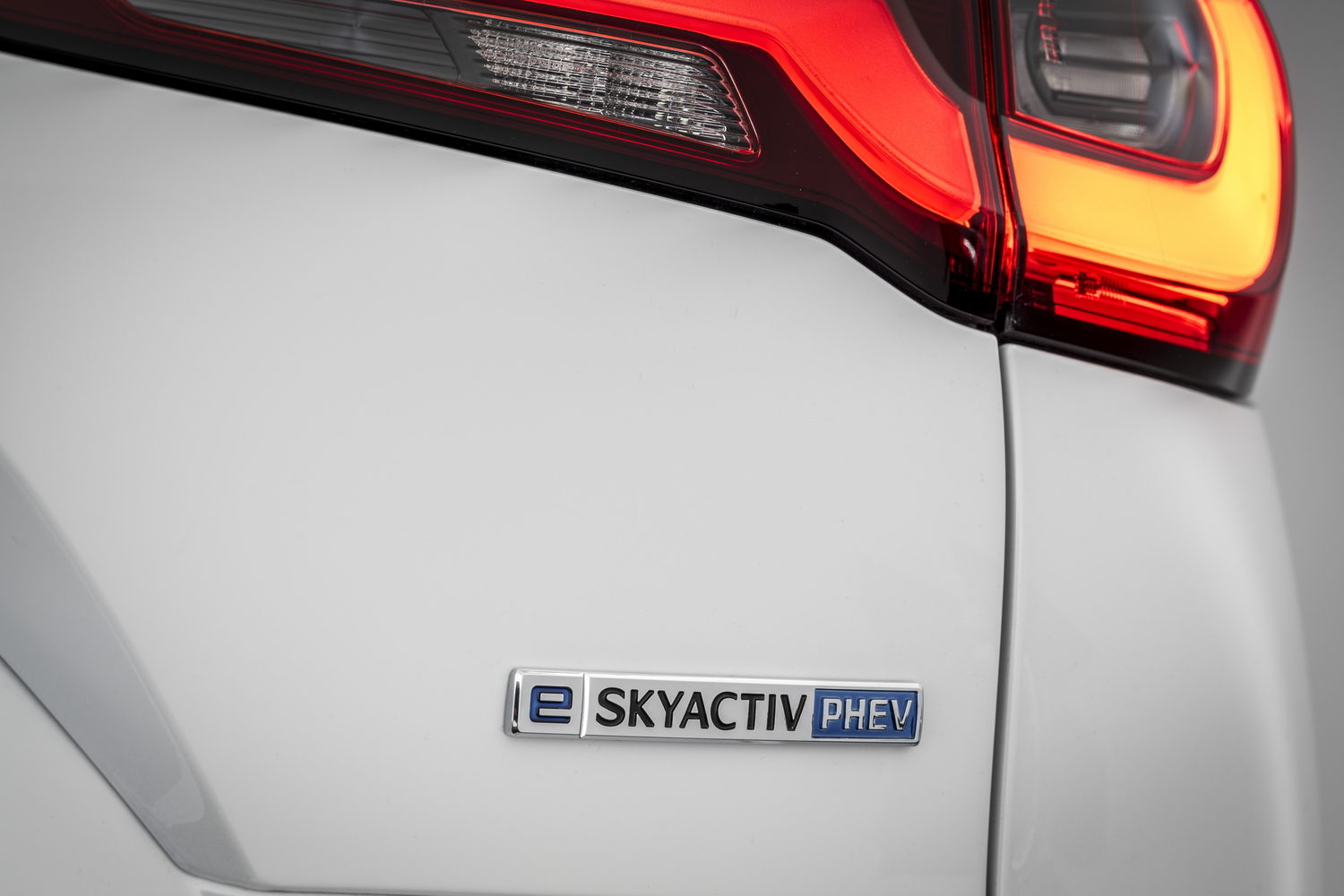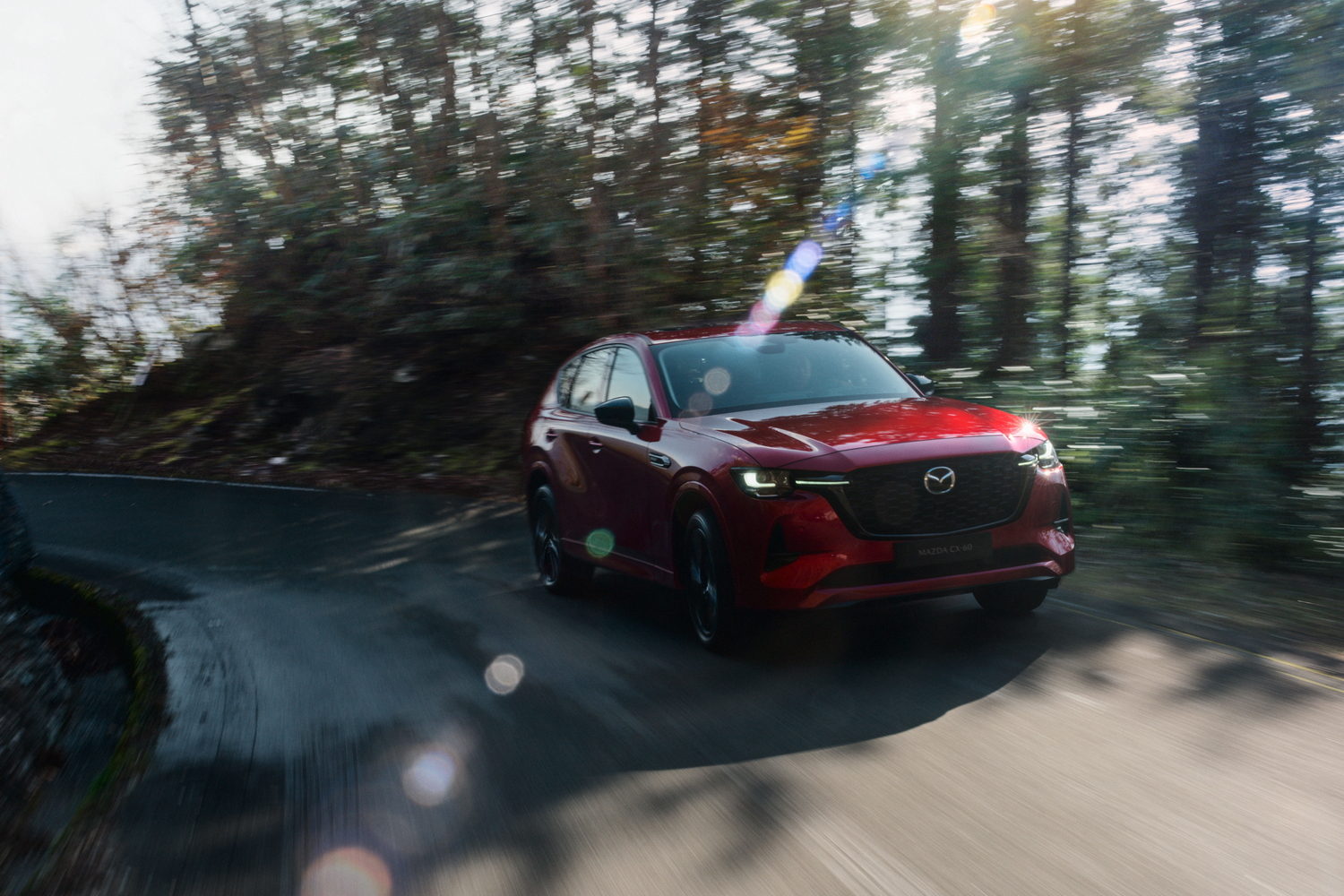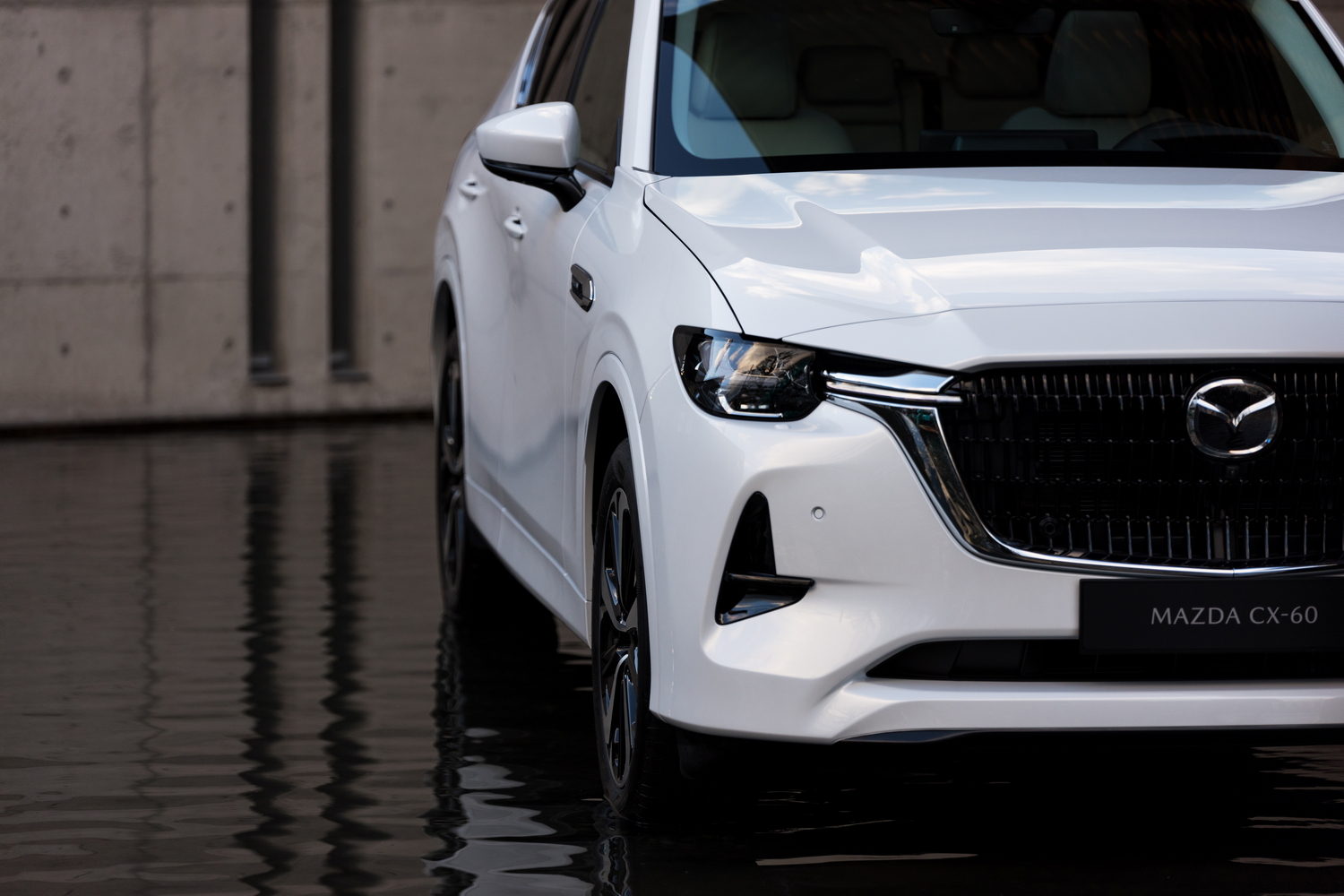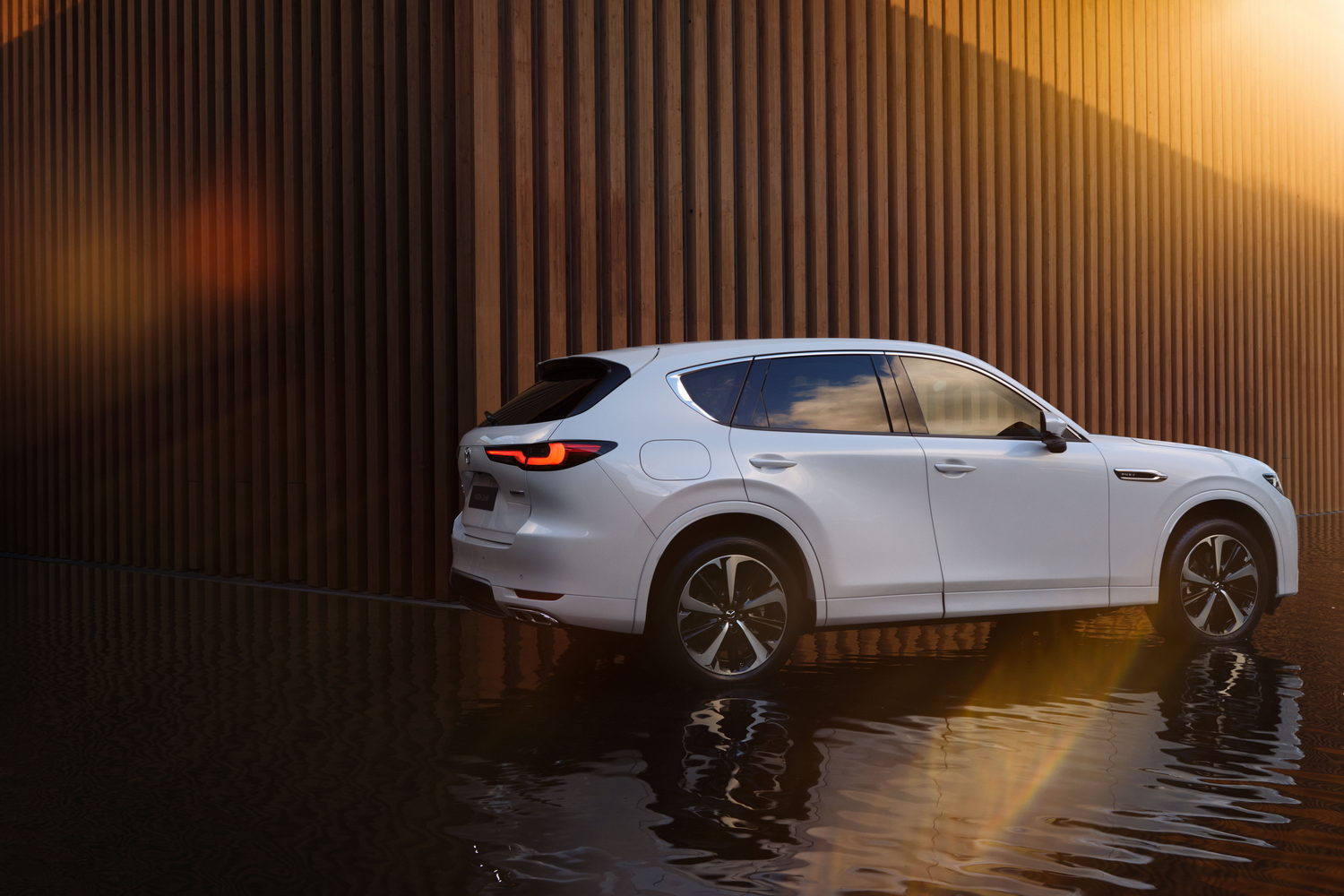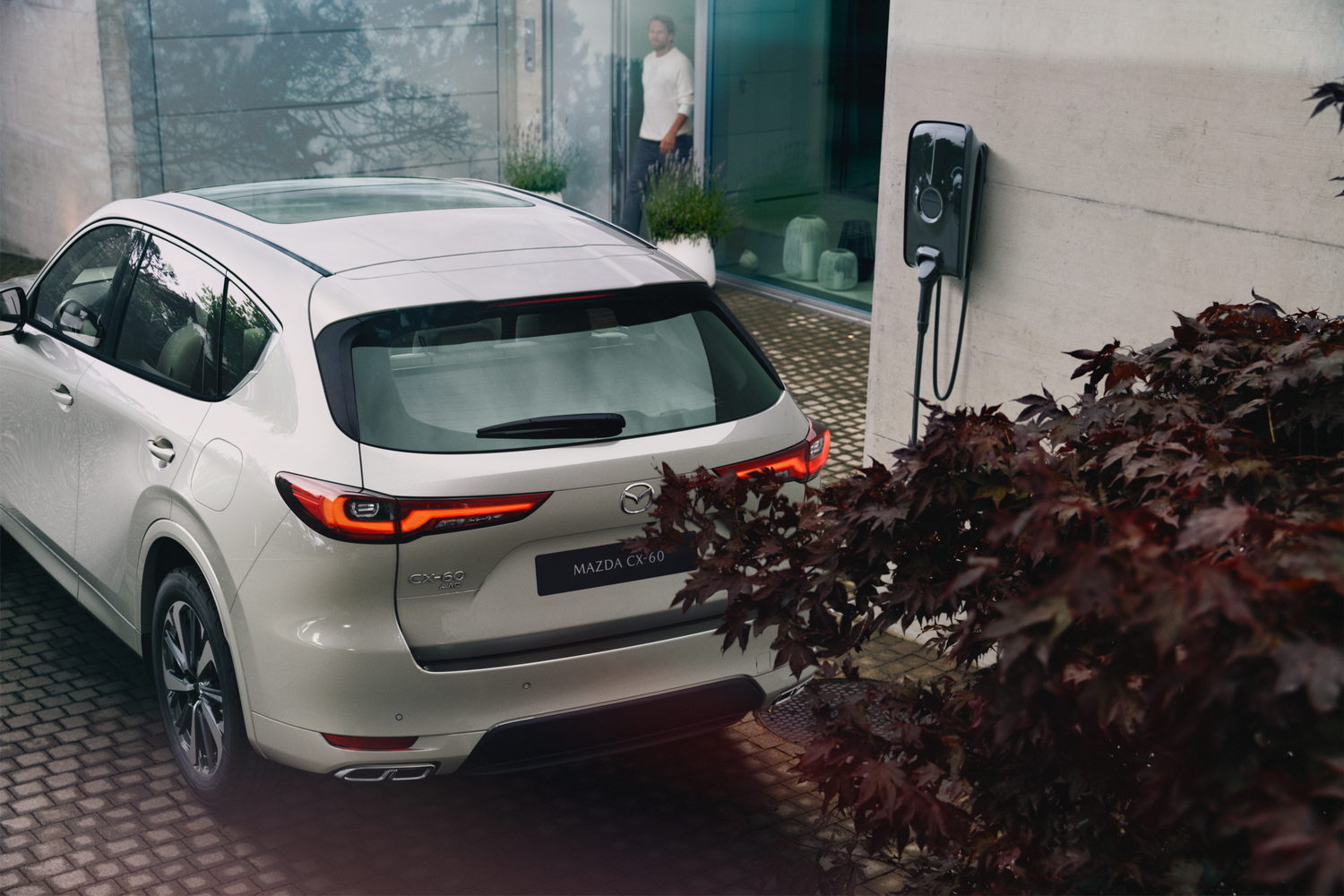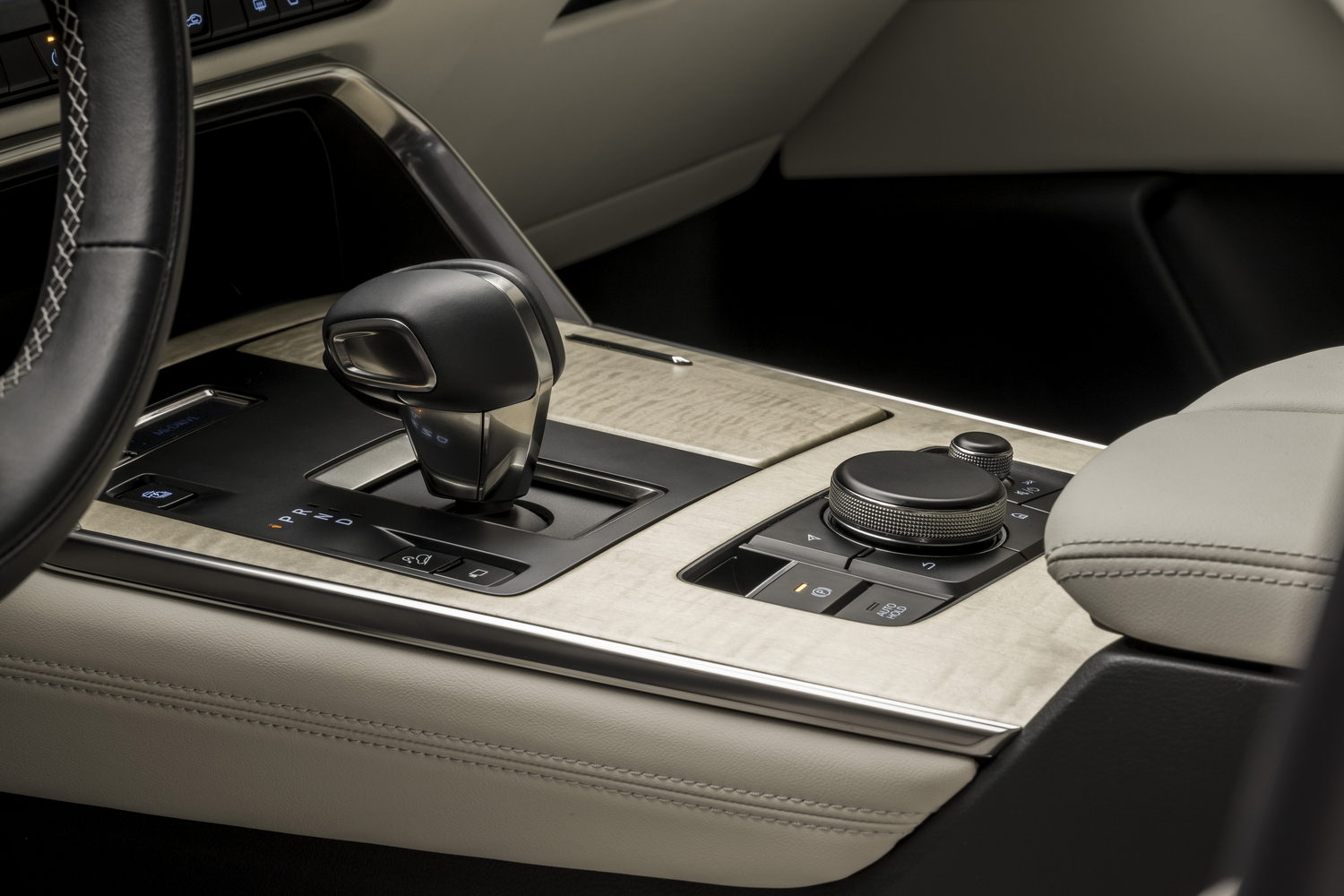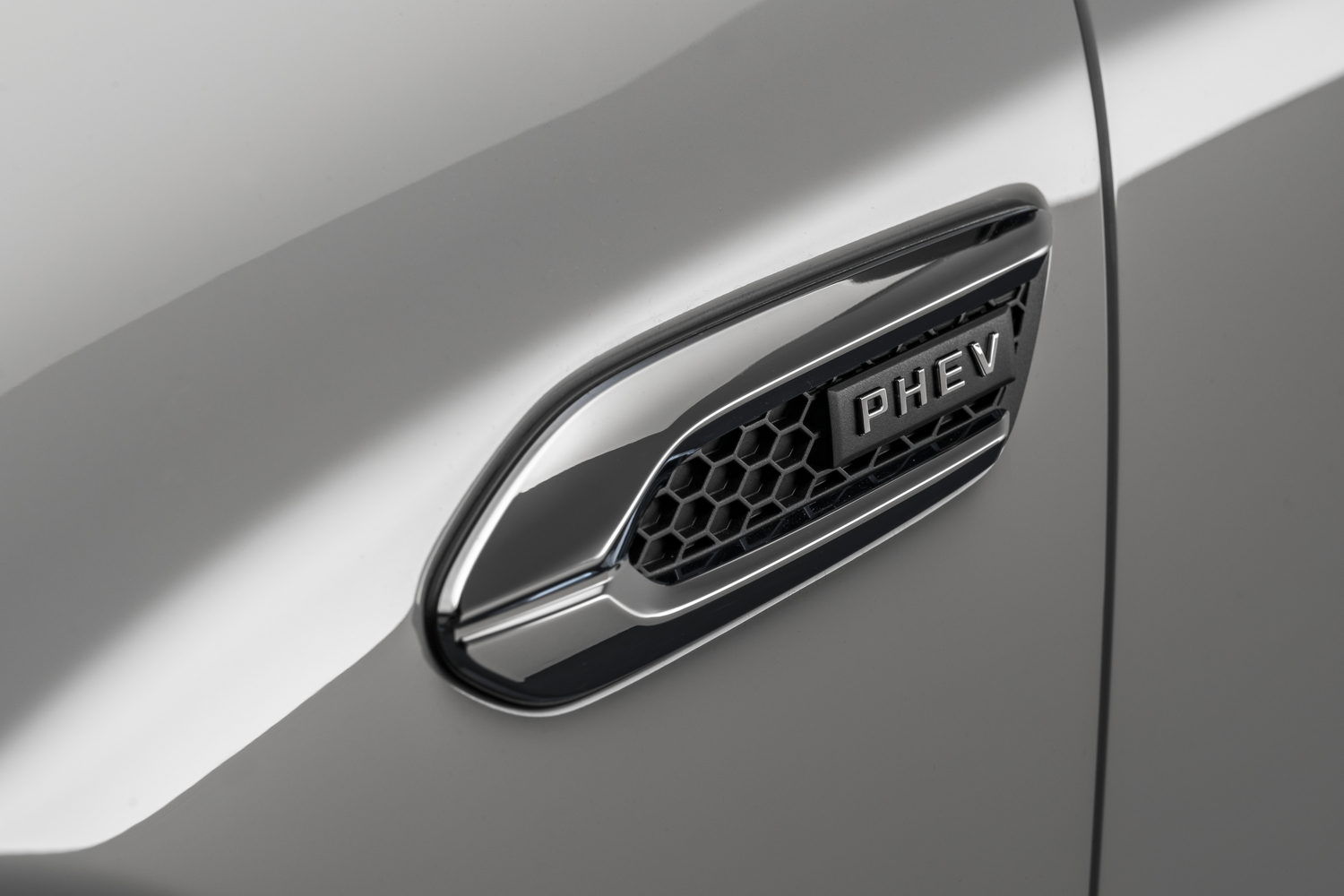The new Mazda CX-60 is tasked with taking the Japanese company more upmarket than it has ever gone before. It's a large five-seat SUV designed to top the Mazda line-up, above the CX-5, and setting out the template for further premium models to come from the firm. The CX-60 also marks the introduction of Mazda's first ever plug-in hybrid powertrain. Irish sales are due to start later in 2022 and it's squarely aimed at the likes of the Audi Q5 and Mercedes GLC. Mazda is developing a very similar vehicle on the same platform specifically for the North American market that will be badged the CX-70.
Hybrid, petrol or diesel power
The CX-60 will launch in Ireland with a new plug-in hybrid powertrain, making this the first Mazda plug-in hybrid electric vehicle (PHEV). It will be followed by two new straight-six engines - one petrol, one diesel, both offered in two different power outputs.
The chassis of the CX-60 has been designed around a front-engine, rear-drive architecture (though most versions will have fulltime four-wheel drive), meaning that the engines are mounted longitudinally. All variants make use of an advanced new eight-speed automatic gearbox, too.
Badged e-Skyactiv, the CX-60 PHEV uses a naturally aspirated 2.5-litre, four-cylinder petrol engine, producing up to 192hp and 261Nm of torque. That's mated to a 100kW electric motor that can produce 250Nm of torque from a standstill. Combined, the maximum outputs are quoted as 327hp and 500Nm of torque, making the CX-60 the most powerful road-going Mazda yet and allowing the SUV to reach 100km/h from a standstill in just 5.8 seconds.
The electric motor draws power from a 17.8kWh lithium-ion battery mounted in the floor of the car within the wheelbase. Mazda quotes an electric range of up to 63 kilometres depending on specification. As with all plug-in hybrids, the official fuel consumption figure of 1.5-1.6 litres/100km is only achievable if the car is plugged in regularly. The CO2 emissions rating is 33-37g/km.
Though the introduction of a plug-in hybrid system is big news for Mazda, its intention to go upmarket is perhaps more tellingly illustrated by its development of two new straight-six engines, clearly targeting BMW and Mercedes on that front. Full details have yet to be released, but we do know that both units will be assisted by a 48-volt mild-hybrid system and that the 3.0-litre petrol engine, badged e-Skyactiv X, will be naturally aspirated. Meanwhile, the six-cylinder diesel engine is a 3.3-litre unit, and Mazda claims it's not much heavier than a four-cylinder alternative. It will of course confirm with forthcoming Euro 7 emissions legislation.
While the CX-60 PHEV comes with fulltime all-wheel drive, the petrol and diesel models will be available with rear- or all-wheel drive.
A chassis to cope?
Mazda is making the right noises about the CX-60's chassis, including a rigid bodyshell and sophisticated suspension design. Only a passive system has been developed thus far, but that includes something Mazda calls Kinematic Posture Control. That's the posture of the car incidentally, not the driver, and it's a system originally devised for use on the Mazda MX-5. There's plenty more talk about driver engagement, too, while the CX-60 debuts a brake-by-wire system to mix regenerative braking with friction braking.
The driver can select between Normal, Sport, Off-Road, Towing (the CX-60 can tow up to 2,500kg) and - if it's the plug-in hybrid - EV driving modes using the 'Mi-Drive' (Mazda Intelligent Drive) feature, while there's also something called the Driver Personalisation System to assist with setting the perfect driving position - and automatically adjusting it depending on who is in the driver's seat by using facial recognition.
A premium cabin
Inside, the CX-60 is a little larger than the CX-5, but it's much more 'premium', though by how much will depend on the trim level of course. The top-of-the range versions have bespoke stitched trim on the dashboard, tactile maple wood in the doors and lots of other quite special materials dotted around. Saying that, the design is quite restrained, as emphasised by the relatively compact infotainment screen in the middle of the dashboard.
That's operated by a rotary wheel on the (notably wide) centre console and there are high-quality physical controls for the air conditioning above a subtle wireless charging pad. In the underarm storage cubby there are two USB-C ports and there are two more behind for the rear passengers, along with air vents.
Access to the back seats is via wide-opening doors and there's good space for two adults there, with a third in the middle if needs be. There are two pairs of ISOFIX mountings for the outer positions, though the central seat doesn't look big enough to easily accommodate a third child seat.
The boot carries 570 litres with the rear seats in use and they split and fold nearly flat to create a large smooth load space. That figure applies to the hybrid as well as the petrol and diesel models because the large battery pack is mounted under the main cabin.
A new design direction?
At first glance, the CX-60 looks like an evolution of the CX-5, but it's a larger car in all directions and there's a more pronounced 'cab-back' look to the silhouette. Other than that, there's a new grille design and, while the headlight design is similar to that used elsewhere in the Mazda range, it's a new approach with the two elements stacked instead of next to each other, while a distinctive daytime running light graphic encroaches on the grille.
The pictures in the gallery show the high-spec models in the line-up, which feature body-coloured door sills, bumper trim and wheelarch surrounds, where the entry-level models will use black instead. The alloy wheels are either 18-inch in diameter or 20-inch and the CX-60 launches with a new signature colour, called Rhodium White.
Irish pricing for the Mazda CX-60
Mazda Ireland has yet to reveal pricing for the CX-60, but it has confirmed that the Audi Q5, costing from about €60,000 in plug-in hybrid guise, is the benchmark it is targeting. The PHEV version of the CX-60 will arrive initially, with the first Irish buyers likely to receive cars from autumn 2022, while the 3.3-litre diesel follows soon after. In 2023, we'll see the new seven-seat version called the Mazda CX-80 - a version of which will be developed for North America and badged CX-90.

